Good morning! Here is your news briefing for Tuesday December 29, 2020
1.) THE DAILY SIGNAL
|
December 29 2020
|
|
Good morning from Washington, where the dominant media pivots to a new set of rules for covering the presidency. Victor Davis Hanson calls out the hypocrisy. How are owners of small businesses in California coping amid COVID-19 lockdowns? Virginia Allen asks some of them. Plus: Amazon’s new hire has an in with Joe Biden; Nashville celebrates hero cops after the Christmas Day explosion; and China appears to be off the hook with the World Health Organization. Eighty years ago today, London endures its most devastating air raid of World War II as German pilots fire-bomb the city, sparking hundreds of blazes during the Battle of Britain.
|
|
||||||||||||||||||||||||||||||||
|
| Add morningbell@heritage.org to your address book to ensure that you receive emails from us.
You are subscribed to this newsletter as rickbulow1974@gmail.com. If you want to receive other Heritage Foundation newsletters, or opt out of this newsletter, please click here to update your subscription. |
2.) THE EPOCH TIMES
You’ve been selected to participate in a special post-election PRO-LIFE SURVEY to gauge the enthusiasm of the Pro-Life Movement heading into January.
 Americans are facing a battle between good and evil. Many of us here at the Epoch times have seen this before. We have escaped tyrannical governments. And what we are seeing here in America now concerns us. We cannot be bystanders. We must defend our Constitution. We must be prepared. We are asking you to subscribe to The Epoch Times for 4 months for just $1. NOTE: This is our lowest priced offer ever, and it is available for a very limited time. Cancel anytime  “Those who expect to reap the blessings of freedom must, like men, undergo the fatigue of supporting it.” THOMAS PAINE   
 Students for Life of America, the largest pro-life youth organization in the nation with more than 1,300 active groups, is conducting this survey to help us gauge the enthusiasm of the Pro-Life Movement.With their full embrace of late-term abortion and even infanticide, the Abortion Lobby’s true colors have been exposed like never before…and now they’re claiming a “mandate” to peddle even more abortion extremism!Will you please click here to begin your PRO-LIFE SURVEY immediately?
 “It should be emphasized that nearly all people in the world, especially those who attended college after the 1960s, have been exposed to communist influences.”   Copyright © 2020 The Epoch Times, All rights reserved. You are receiving this email because you opted in to receive newsletter communications from The Epoch Times.
The Epoch Times. 229 W. 28 St. Fl. 5 New York, NY 10001
We have communist China at our gates, ready to take over. |
3.) DAYBREAK
|
4.) THE SUNBURN
5.) MORNING BREW
|
BECOME SMARTER IN JUST 5 MINUTES
Get the daily email that makes reading the news actually enjoyable. Stay informed and entertained, for free.
6.) THE FACTUAL
|
7.) LIBERTY NATION
|
|
|
|
8.) FOX NEWS
|
||||||||||
|
||||||||||
|
9.) UNITED PRESS INTERNATIONAL
|
| DECEMBER 29, 2020 | |||||||
|
| U.S. NEWS | |||||||||||||||
|
|||||||||||||||
| SCIENCE NEWS | |||||||||||
|
|||||||||||
| ENTERTAINMENT NEWS | |||||||||||||||
|
|||||||||||||||
| ON THIS DAY | |||||||||||||||
|
|||||||||||||||
| PHOTOS | ||||
|
||||
|
|
||||
|
|
|
10.) JUST THE NEWS
11.) AMERICAN ENTERPRISE INSTITUTE
|
12.) THE FLIP SIDE
13.) AXIOS
Axios AM
☕Good Tuesday morning! Today’s Smart Brevity™ count: 1,190 words … 4½ minutes.

Illustration: Eniola Odetunde/Axios
China will end 2020 as the only major country to see its economy grow, not shrink, Axios chief financial correspondent Felix Salmon reports.
- Why it matters: China is operating from a position of great strength, with an economy expected to grow by 8.4% in 2021. The competition with the U.S. is likely to be fiercer during Joe Biden’s presidency than at any point in history.
- Columbia University historian Adam Tooze said: “However many times you hear the China growth story, it continues to have the capacity to shock and amaze. … In scale and speed, it is unlike any previous experience.”
By the numbers: China’s economy is projected to grow by 2% in 2020 and by 8.4% in 2021. By the end of next year, its economy is expected to be 10.6% larger than it was at the beginning of this year.
- By contrast, after shrinking by 3.6% this year and growing by a projected 4% next year, the U.S. economy is going to end 2021 just 0.25% larger than it was at the beginning of 2020.

The big picture: China managed to become a post-COVID economy within months of the virus striking.
- Wuhan was the world’s first big city to be locked down in an attempt to get the coronavirus under control. Today, its nightclubs are packed with revelers, none of whom feel the need to wear masks or social distance.
- A Lancet study found that China made full and effective use of its centralized epidemic response system, as well as fresh memories of the SARS pandemic and a low incidence of nursing homes.
- The lockdown, which lasted 76 days in Wuhan, was particularly strict, with only one member of each household permitted to leave home every couple of days for necessary supplies. It was also accompanied by an effective and efficient nationwide contact-tracing program.
China’s factories are operating above their designed capacity, Sinovation Ventures CEO Kai-Fu Lee tells Axios from Beijing:
- They’re making up for pandemic-related reductions in manufacturing capacity in the rest of the world, as well as for the period of time they were shut down earlier this year.
The bottom line: China has never been stronger. It will take all of Biden’s charm and diplomatic savvy to put together a coalition capable of constraining China.

President-elect Biden and Vice President-elect Harris in Wilmington yesterday. Photo: Jonathan Ernst/Reuters
President-elect Biden, who has vowed to be clear-eyed and straight about the pandemic, plans a renewed warning in remarks on COVID-19 in Wilmington today, a transition official tells me.
- Echoing a CDC forecast from last week, Biden is expected to say that, tragically, the infection rates and the number of deaths are expected to increase in the coming weeks.
- Biden plans to call out the Trump administration for falling short on the pace of vaccine distribution, and will discuss his own plan to get people vaccinated as quickly as possible.
Why it matters: Although Americans have been getting blunt talk from their governors and from doctors on TV, President Trump has been AWOL on COVID since the election.
- Biden is intentionally filling the vacuum, addressing the nation in terms that aim to balance hope and realism.
With a bluntness that has been missing from this administration, Biden talked Dec. 14 about “this dark winter of the pandemic,” then said last week: “Our darkest days in the battle against COVID are ahead of us, not behind us.”
- Biden has said he has a plan to aim to administer 100 million vaccine shots in his first 100 days (by May 1).
Anthony Fauci, who’ll be Biden’s chief medical adviser on COVID, on Sunday repeated his grim “surge upon a surge” prediction for post-Christmas cases.
- Fauci told Dana Bash on CNN’s “State of the Union”: “I share the concern of President-elect Biden that as we get into the next few weeks, it might actually get worse.”
What we’re watching: Straight talk is easier when it’s on Trump’s watch. Biden’s test will be to be just as blunt after he takes the oath.

President Trump golfs yesterday at Trump International Golf Club in West Palm Beach. Photo: Marco Bello/Reuters
A couple of days ago, it looked impossible that $2,000 COVID relief checks — up from the $600 checks for individuals in the package President Trump signed Sunday — could pass the Senate.
- That has changed with Trump’s final-hours advocacy for bigger checks, Republican sources tell Axios White House editor Margaret Talev and me.
It’s still an uphill battle. But Republican senators are feeling more pressure from constituents — pumped by Trump — to do more.
- It could be too politically risky for some Republican senators to vote “no.”
- If Senate Majority Leader Mitch McConnell “brings it to the floor, it might get 60. Then Trump can claim victory,” said a Republican source who provided a breakdown of how the vote could go.

Senators to watch: Rand Paul of Kentucky and Ron Johnson of Wisconsin — with one or two other spending hardliners needed.
- The House yesterday voted overwhelmingly — 275-134 — for $2,000 checks, with 44 Republicans joining almost all Democrats.
🥊 A Wall Street Journal editorial (subscription) today calls the president’s push for $2,000 checks “a Donald Trump in-kind contribution to Minority Leader Chuck Schumer and Joe Biden.”
- If McConnell allows a vote, The Journal argues, it “would split the GOP caucus and upset fiscally conservative voters.”
What’s next: Senate consideration of $2,000 checks is unlikely to begin before Friday.
📄 Go deeper: New highlights from the package.
A full moon rises last evening behind people standing on the Edge, the observation deck at Hudson Yards in Manhattan.
- It’s billed as the Western Hemisphere’s highest outdoor sky deck: 1,100 feet up, with a view 100 stories down — extending 80 feet straight out into the air.
Banner hung by anti-eviction protesters in New York City in August. Photo: Michael M. Santiago/Getty Images
The New York Legislature convened an unusual special session between Christmas and New Year’s to pass one of the country’s most comprehensive anti-eviction laws, which will ban landlords from evicting most tenants for at least another 60 days, the N.Y. Times’ Dana Rubinstein reports.
- Why it matters: “As many as 1.2 million New York households are currently at risk of being removed from their homes, according to a database maintained by Stout, a consulting firm.”
- The law will also “protect some small landlords from foreclosure and automatically renew tax exemptions for homeowners who are elderly or disabled.”
The big picture: “Nationally, an estimated 7 million to 14 million households are at risk for eviction, according to Stout’s database. They are thought to be short between $11 billon and $20 billion in rent.”
A drone lifts off from the roof of a UPS truck during testing in Lithia, Fla. Photo: Scott Audette/Reuters
Small drones will be allowed to fly over people and at night in the U.S., the FAA said yesterday — a significant step toward use for widespread commercial deliveries, Reuters’ David Shepardson reports.
- The FAA said the much-anticipated drone rules require Remote ID for most drones — a digital license plate that enables identification from the ground.
“Vaxxies” — selfies taken while getting the COVID vaccine — appeared in the N.Y Times for the first time Sunday, per the Twitter bot @NYT_first_said, which tracks words’ debut in The Times. (hat tip: The Morning)

A fast-food eatery in Pompeii — a “thermopolium,” frozen in time with the eruption of 79 A.D. — has been excavated, revealing dishes that were popular with citizens of the ancient Roman city, AP’s Frances D’Emilio writes from Rome.
- Archaeologists dug up a multi-sided-counter, with wide holes in the top to hold vessels for hot foods, like soup containers at a salad bar.
Images of two upside-down mallards and a rooster likely served to advertise the street-fo0d menu.
- A fresco depicts a dog on a chain — perhaps like a modern reminder to leash pets. Vulgar graffiti is inscribed on the painting’s frame.
A duck bone fragment was found in one of the containers, along with remains from goats, pigs, fish and snails.
- At the bottom of a wine container were traces of ground fava beans, which in ancient times were added to wine for flavor and to lighten its color.

📬 Thanks for starting your day with us. Please invite your friends to sign up for Axios AM/PM.
14.) THE WASHINGTON FREE BEACON
|
||||||||||||||||||||||||||||||||||||||||||||||||||||||||||||||||||||||
|
||||||||||||||||||||||||||||||||||||||||||||||||||||||||||||||||||||||
|
15.) THE WASHINGTON POST MORNING HEADLINES
|
|
|||||||||||||||||||||||||||||||||||||||||||||||||||||||||||||
|
|||||||||||||||||||||||||||||||||||||||||||||||||||||||||||||
|
|||||||||||||||||||||||||||||||||||||||||||||||||||||||||||||
16.) THE WASHINGTON TIMES
|
|
|
|
|||||
|
|
|
|
|
|
|
|
|
|
|
|
|
|
|
|
|
|
|
|
|
|
|
|
|
|
|
|||||||
|
|
|
|
|
|
|
|
|
|
|
|
|
|
|
|
|
|
|
|
|
17.) THE WASHINGTON EXAMINER
![]()
|
|||||||||||||||||||||||||||||||||||||||||||||||||||||||||||||||||||||||||||||||||||||||||||||||||||||||||||||||||||||||||||||||||||||||||||||||||||||||||
   |
| Copyright © 2020 MEDIADC, All rights reserved.Washington Examiner | A MediaDC Publication 1152 15th Street NW Suite 200 | Washington, DC 20005 |
| You received this email because you are subscribed to Examiner Today from The Washington Examiner. Update your email preferences to choose the types of emails you receive.We respect your right to privacy – View our Policy Unsubscribe |
18.) ASSOCIATED PRESS
|
December 29, 2020 View in Browser  AP MORNING WIRE Good morning. Tamer Fakahany is on vacation until Jan. 4. During this holiday period, we are serving up a daily briefing on what our readers consider the best of the AP news report each morning. As the very unusual period known as 2020 comes to an end, we wish you and those you care about a happy, healthy new year.
TED ANTHONY Director of Digital Innovation
The Rundown WASHINGTON (AP) — President Donald Trump’s push for $2,000 COVID-19 relief checks now rests with the Senate after the House voted overwhelmingly to meet the president’s demand to increase the $600……Read More WILMINGTON, Del. (AP) — President-elect Joe Biden is warning of massive damage done to the national security apparatus by the Trump administration and “roadblocks” in communication between agency… …Read More A huge U.S. study of another COVID-19 vaccine candidate got underway Monday as states continue to roll out scarce supplies of the first shots to a nation anxiously awaiting relief from the… …Read More WASHINGTON (AP) — The Democratic-controlled House voted overwhelmingly to override President Donald Trump’s veto of a defense policy bill, setting the stage for what would be the first veto… …Read More They are two young girls from two very different worlds, linked by a global industry that exploits an army of children. Olivia Chaffin, a Girl Scout in rural Tennessee, was a top cookie… …Read More Other Top Stories We streamed, we Zoomed, we ordered groceries and houseplants online, we created virtual villages while navigating laptop shortages to work and learn from home. When it comes t…Read More NASHVILLE, Tenn. (AP) — In the days before he detonated a bomb in downtown Nashville on Christmas, Anthony Quinn Warner changed his life in ways that suggest he never intended…Read More COLUMBUS, Ohio (AP) — The fate of a white Columbus police officer who fatally shot a Black man last week hangs in the balance after a disciplinary hearing Monday that may resu…Read More Heisman Trophy finalists Mac Jones and DeVonta Smith have been selected to The Associated Press All-America team, leading a contingent of five Alabama players on the first-tea…Read More “There are only two forces that can carry light to all the corners of the globe…the sun in the heavens and The Associated Press down here.” Mark Twain GET THE APP
Download the AP News app to get breaking news alerts from AP on your phone, tablet or watch.
Unsubscribe About us 2020 THE ASSOCIATED PRESS. ALL RIGHTS RESERVED. 200 Liberty St. New York, NY 10128 |
|||||||||||||||||
19.) FORT MYERS (FLORIDA) NEWS-PRESS
|
||||||||||||||||||||||||||||||||||||||||||||||||||||||||||||||||||||||||||||||||||||||||||||||||||||||||||||||||||||
20.) CHICAGO TRIBUNE
|
||||||||||||||||||||||||||||||||||||||||||||||
21.) CHICAGO SUNTIMES
Lawyer for victim of botched police raid calls off meeting with Lightfoot
|
|||||
|
|
|
|
|
|
|
|
|
|
|
|
|
|
22.) THE HILL MORNING REPORT
23.) THE HILL TIPSHEET
![]()
|
24.) ROLL CALL
25.) POLITICO PLAYBOOK
POLITICO Playbook: Say goodbye to December doldrums
Presented by Facebook
DRIVING THE DAY
YES, WASHINGTON HAS AVOIDED A GOVERNMENT shutdown. But the late-December and early-January doldrums we’re accustomed to still aren’t happening this year.
ALL OF THE SUDDEN, we’ve been launched into a week with a flurry of legislative activity with high stakes for both parties.
MONDAY NIGHT, President DONALD TRUMP suffered two relatively stunning defeats in the House.
— THE VAST MAJORITY OF REPUBLICANS voted against his request for $2,000 direct payments — 130 Republicans voted against it, while just 44 Republicans voted in favor. The bill passed with near uniform support from Democrats.
— THE HOUSE OVERWHELMINGLY VOTED TO OVERRIDE TRUMP’S veto of the National Defense Authorization Act, the Pentagon policy bill which the president rejected because it didn’t include language on social media policy. Yes, you read that right. The vote was 322-87.
NOW, THE ACTION shifts to the Senate.
— SEN. BERNIE SANDERS (I-Vt.) told our BURGESS EVERETT that he will block consideration of the NDAA veto override until Senate Majority Leader MITCH MCCONNELL schedules a vote on the $2,000 check bill. SANDERS could delay the NDAA override until Jan. 1, and keep the chamber in session over the weekend. MCCONNELL hoped to vote on the NDAA veto override on Wednesday.
— THE SENATE GOP LEADERSHIP has thus far shown little interest in the $2,000 check bill, and it’s not entirely clear to us — or them, for that matter — whether the bill would get the requisite 60 votes it needs to get through the chamber. Twelve Republicans would need to join with all Democrats. Sen. MARCO RUBIO (R-Fla.) endorsed the bill. But senior Republicans were skeptical it would garner 12 of their members with such a paltry GOP vote in the House. But make no mistake, this is a really tough vote for Republicans.
MCCONNELL CAN:
1) Ignore SANDERS and force a New Year’s Day vote. But that does screw with Sens. KELLY LOEFFLER and DAVID PERDUE’s campaigning in Georgia.
2) Put up a vote on the $2,000 bill and see what happens. Maybe some Republican slows it down. Maybe it eventually passes, maybe not.
WATCH FOR MCCONNELL when he speaks as he opens the Senate today for clues on where all of this is going.
MURDOCH-WORLD TAKES ANOTHER WHACK AT TRUMP … WSJ ED BOARD: “Trump Gives Schumer an Assist: The President writes a $2,000 check to make Democrats the majority.”: “President Trump finally signed the Covid-19 relief bill and 2021 budget on Sunday night, but not before giving a big assist to Democratic hopes of gaining control of the Senate in the two runoff elections on Jan. 5. Current GOP Majority Leader Mitch McConnell is left this week trying to undo the significant political damage. …
“Senate Republicans oppose the $2,000 for these sound reasons, but Mr. Trump has put them in a political spot. … Mr. Trump’s narcissism isn’t news. But if Republicans lose the two Georgia seats and their majority, Republicans across the country should know to thank Mr. Trump for their 2021 tax increase.”
UP NEXT — ON SUNDAY, Speaker NANCY PELOSI has to win a floor vote to regain the speakership for next Congress. Lawmakers must be present in Washington and on the House floor to vote for speaker — proxy votes are not accepted. Several Democrats have Covid, and several have been ill and unable to get to Washington. HEATHER CAYGLE scooped Monday that PELOSI told Democrats that her “opponent is Covid” in the speaker race. But she told reporters Monday that “I’m fine” — meaning she believes she’ll win.
Good Tuesday morning.
MARKETWATCH — “U.S. Stocks Finish at Records After Stimulus Bill Passage,” by WSJ’s Caitlin Ostroff and Akane Otani: “U.S. stocks climbed to records Monday after President Trump signed a Covid-19 aid bill, averting a government shutdown and ending uncertainty about the rollout of the spending package.
“The Dow Jones Industrial Average added 204.10 points, or 0.7%, to 30403.97. The S&P 500 advanced 32.30 points, or 0.9%, to 3735.36 and the Nasdaq Composite gained 94.69 points, or 0.7%, to 12899.42. All three indexes set new closing highs.” WSJ
NYT AND WAPO, ON TRUMP’S LAST FEW DAYS…
— NYT: “Trump’s Veto Threat Did Little to Alter Stimulus Package,” by Mike Shear and Catie Edmondson: “As an exercise in raw presidential power, it was a flop. As a political tactic, it backfired. And as a coda to his final weeks in office, President Trump’s threat to veto a $900 billion Covid relief and government funding bill merely underscored his tumultuous tenure in the Oval Office.”
— WAPO: “A day on the golf course helped change Trump’s mind on the stimulus bill,” by Mike DeBonis and Phil Rucker: “With other key Republicans waylaid, it fell to Sen. Lindsey O. Graham (R-S.C.) to talk the president down. So Graham raced to Trump’s Florida golf club and worked the problem: What possible solution could assuage Trump without forcing Congress to reopen negotiations? ‘We’d hit a shot, take a phone call. Hit a shot, take a phone call. Hit a shot, talk about what’s a good deal,’ Graham said in an interview Monday. ‘It was a very intense Christmas Day.’ …
“Graham was far from alone. Republicans across Washington had blanched at Trump’s shocking threat to kill the coronavirus relief package — especially with the Georgia runoffs and the Senate majority hanging in the balance.
“Moments before Trump posted the Dec. 22 video threatening to torpedo the bill, he was on the phone with McCarthy — who was in a clinic in Bakersfield, Calif., minutes away from going under general anesthesia for surgery on an injured elbow. McCarthy spent the rest of the week at home with his arm in a cast, reminding Trump of the political wins he’d secured in the bill and searching for a way to address the president’s remaining concerns.”
MEANWHILE … THE CORONAVIRUS CONTINUES TO RAGE: 19.3 MILLION Americans have tested positive for the coronavirus … 334,963
BIG NEWS ON THE HILL … KYLE CHENEY: “Congressional staffers eligible to receive coronavirus vaccine”: “Congress’ attending physician informed lawmakers Monday night that two staffers in every House member and senator’s personal offices are now eligible to receive the coronavirus vaccine. In addition, the Office of the Attending Physician is offering the vaccine to four staffers of every committee chair and every ranking committee member.
“The announcement, a memo from Brian Monahan to all congressional offices, emphasized that the first wave of staff vaccines is meant for ‘critical’ employees, those whose jobs are deemed essential for ‘continuity of operations,’ require physical presence or are likely to involve in-person interactions.
“‘Employees who occupy positions determined to make them eligible for the vaccine under these standards will be and/or have been notified of their status separately and provided with logistical information regarding the process for scheduling an appointment for the vaccination,’ Monahan said in the memo to lawmakers. He added, ‘We will continue to keep the House community informed of further supply of COVID-19 vaccine as it becomes available on a wider scale.’”
— AP: “More COVID-19 vaccines in the pipeline as US effort ramps up,” by Lauran Neergaard: “A huge U.S. study of another COVID-19 vaccine candidate got underway Monday as states continue to roll out scarce supplies of the first shots to a nation anxiously awaiting relief from the catastrophic outbreak.
“Public health experts say more options in addition to the two vaccines now being dispensed — one made by Pfizer and its German partner BioNTech, the other by Moderna — are critical to amassing enough shots for the country and the world.
“The candidate made by Novavax Inc. is the fifth to reach final-stage testing in the United States. Some 30,000 volunteers are needed to prove if the shot — a different kind than its Pfizer and Moderna competitors — really works and is safe.”
THE TRANSITION — “Biden accuses Trump appointees of obstructing transition on national security issues,” by WaPo’s Amy Wang, Jenna Johnson and Dan Lamothe: “President-elect Joe Biden on Monday accused President Trump and his political appointees of obstructing the transition of power to his incoming administration, particularly in the national security sphere, an escalation in tone after reports of isolated difficulties in the transition process last week.
“Biden specifically called out the Office of Management and Budget and the Defense Department as agencies where his transition team had encountered ‘roadblocks’ from political leadership.
“‘Right now, we just aren’t getting all the information that we need from the outgoing administration in key national security areas. It’s nothing short, in my view, of irresponsibility,’ Biden said of the resistance his team was facing. He warned that such delays could allow enemies of the United States to take advantage of vulnerabilities, citing a recent massive cybersecurity breach that compromised several U.S. agencies.”
— “Biden builds out White House digital operation,” by CNN’S Dan Merica: “Rob Flaherty, who worked as the digital director of the Biden campaign, will assume the role of director of digital strategy in the White House, Jamie Lopez will work as director of platforms and Brendan Cohen, who previously served as the deputy director of editorial on the Biden campaign, will serve as the platform manager of the digital operation. They will be joined by Jonathan Hebert as video director and Carahna Magwood as creative director, both of whom held similar roles on the Biden campaign.”
IN GEORGIA … KYLE CHENEY and JOSH GERSTEIN: “Judge blocks voter purge in 2 Georgia counties”: “A federal judge in Georgia on Monday ordered two counties to reverse a decision removing more than 4,000 voters from the rolls ahead of the Jan. 5 runoff elections that will decide control of the U.S. Senate.
“The judge, Leslie Abrams Gardner — the sister of former gubernatorial candidate Stacey Abrams, a prominent ally of President-elect Joe Biden who has led voter registration efforts across the state — concluded that the counties appeared to have improperly relied on unverified change-of-address data to invalidate registrations in the two counties.
“The bulk of the registrations that the counties sought to rescind, more than 4,000, were in Muscogee County, which Biden won handily in November. An additional 150 were from Ben Hill County, which Trump won by a wide margin.
“The suit, brought by national Democratic Party attorney Marc Elias’ group Democracy Forward, followed an effort to challenge the lengthy roster of voters simply because their registrations appeared to match U.S. Postal Service change-of address records. Voting officials in the two counties agreed to remove the voters, despite warnings from Democrats that such postal data is not a reliable or conclusive indicator that a voter has given up their local residence.”
TRUMP’S TUESDAY — The president has no public events on his schedule.
PRESIDENT-ELECT JOE BIDEN will receive the President’s Daily Brief. He will also deliver remarks on the ongoing Covid-19 crisis in Wilmington, Del.
PLAYBOOK READS

VICTORIA GUIDA: “Yellen’s looming headache: Treasury’s vanishing ranks”: “Janet Yellen, poised to become U.S. Treasury secretary, will be focused on preventing the collapse of the fragile economic recovery. Her first order of business will be making sure there are enough people at the department to help.
“Key divisions at Treasury have been hollowed out by attrition during the Trump administration under Secretary Steven Mnuchin, who has sought to cut ‘wasteful spending,’ including on personnel he sees as superfluous. Between fiscal years 2016 and 2019, the department’s main offices — Domestic Finance, Economic Policy and International Affairs, among them — saw their staffing levels plunge by nearly a quarter as budgets were slashed.
“Yellen, if confirmed, would have a special urgency to replenish the Domestic Finance division, which functions as the nerve center for the department’s response to economic crises, overseeing grant programs, housing policy and financial markets. Its budget has been drained the most severely.
“‘The entire team that is going to be focused on a national recovery is the one that is hurt the most right out of the gate,’ said Kody Kinsley, who served as assistant Treasury secretary for management from 2016 to 2018. And hiring new career staff can take several months at least. ‘They’re not going to be able to hire up fast enough to consider the task ahead of them,’ Kinsley added. ‘They’re going to have to leverage the talent they have.’”
ON CHINA — “Biden’s nominees will face a China gauntlet,” by Nahal Toosi: “If you’re Antony Blinken, you know you’ll have to answer questions about America’s relationship with China during your Senate confirmation hearing to serve as secretary of State. But what if you’re President-elect Joe Biden’s nominee for secretary of Education? Or his pick for assistant secretary for Fair Housing and Equal Opportunity? Or the person he wants as general counsel at the Transportation department?
“Top lawmakers, Capitol Hill staffers and analysts expect Biden’s would-be team to face an unprecedented barrage of questions about how they plan to handle the Chinese government’s yawning ambitions — to the point where one expert called it a ‘China litmus test.’
“And because Beijing’s growing global clout touches so many different areas — from agricultural tariffs to the coronavirus pandemic to alleged Chinese spies on college campuses — senators are likely to raise the topic during hearings for positions that in the past may have seemed irrelevant.
“Among those who want China to get wide attention throughout the confirmation hearings is Sen. Marco Rubio (R-Fla.), a leading China skeptic who’s expected to chair the Senate Intelligence Committee in the next Congress.” POLITICO
— “Pushback on Xi’s Vision for China Spreads Beyond U.S.,” by WSJ’s Drew Hinshaw, Sha Hua and Laurence Norman
MEDIAWATCH — Today is David Greene’s last day as co-host of NPR’s “Morning Edition.”
PLAYBOOKERS
Send tips to Eli Okun and Garrett Ross at politicoplaybook@politico.com.
TRANSITIONS — Catherine Edmonson will be VP of government affairs at the consulting firm American Defense International. She most recently was an associate at Teneo and is a Henry Cuellar alum. … Cristina Alesci is joining Chobani as chief corporate affairs officer. She previously was a business and political correspondent at CNN. …
… Rep.-elect Scott Franklin (R-Fla.) is adding Michael Richards as deputy COS and legislative director and Patrice Smith as comms director. Richards previously was deputy COS for Rep. Pete Olson (R-Texas). Smith previously was deputy press secretary for Sen. Tim Scott (R-S.C.). …
… Rep. John Katko (R-N.Y.) is adding to the House Homeland Security Committee Daniel Kroese as staff director and Kyle Klein as deputy staff director. Kroese previously was acting deputy assistant director for the National Risk Management Center. Klein previously was staff director for the House Homeland Security Transportation and Maritime Security Subcommittee.
ENGAGED — Greg Stohr, Supreme Court reporter for Bloomberg News, and Kimberly Atkins, a senior opinion writer at the Boston Globe and MSNBC contributor, got engaged Wednesday at his house in D.C. They met in 2007 in the Supreme Court pressroom, but didn’t start dating until 2018. Pic … Another pic
BIRTHDAY OF THE DAY: Reihan Salam, president of the Manhattan Institute. What he’s been reading: “William Voegeli’s ‘The Truth About White Flight’ offers a powerful corrective to some of the myths surrounding the suburban migration of the 1960s and 1970s — and a warning for cities that are now facing rising crime and disorder.” Playbook Q&A
BIRTHDAYS: Del. Aumua Amata Radewagen (R-American Samoa) is 73 … Kate Sherman … NYT’s Katie Glueck and Katie Rogers … Jeremy Waldstreicher is 35 … Andrew Malcolm, chief of staff at Exelon … POLITICO’s Holly Otterbein and Grace Goodman … Edelman’s Alexander Romano … DHS’ Kyle Egan … Tom Dickens is 32 … Washington Examiner’s Grant Addison … Maria Randazzo, senior associate at Dewey Square Group, is 27 … Laura Friedel, staff director/GOP clerk on the Senate Approps Labor-HHS subcommittee … Jordan Langdon and Katie Pudwill, directors at Purple Strategies … Erica Ryan … Tom Jarriel is 86 … Eric Engleman …
… Blair Lyman Watters, senior director at InterDigital Communications … Leah Malone … Maddison Meeks, Republican Attorneys General Association finance coordinator, is 23 (h/t Kelly Laco) … Mike Siegel … Renée (Revetta) Rouse … Scott Keyes … Leo Wallach, principal at Rally … Kevin Griffis (h/t Ben Chang) … Kaiser Health News’ Rachel Bluth … Ashleigh Banfield is 53 … NBC News PR’s Claudia Meyer-Samargia … Boris Medzhibovsky … Rob Burgess … Kai Stinchcombe … David Koeppel … Caroline Ey … Gracie Brandsgard … Laura Clawson … George Caudill … Marie-Therese Dominguez … Mike Woicekowski (h/ts Teresa Vilmain) … IOC President Thomas Bach … Kara Kostanich
Follow us on Twitter
26.) AMERICAN MINUTE
The Death of George Washington … and the warning he left that echoed through the centuries! – American Minute with Bill Federer
![]()
![]()
![]()
27.) CAFFEINATED THOUGHTS
28.) CONSERVATIVE DAILY NEWS
|
29.) PJ MEDIA
The Morning Briefing: Barstool Sports Brings Small Biz Relief to 2020 Misery

Barstool Sports Fund Is a Private Sector Win
Happy Tuesday, dear Kruiser Morning Briefing friends. My dream catchers are all empty.
While wandering through the news landscape on Monday and thinking about the week ahead I quickly realized that I wanted to dig up as much positive subject matter as I could find to write about as I finish up the end of the year. Perhaps the surest sign that the year has broken me is that I am constantly driven by the need to be the upbeat one in the room here at the end.
One of the more insidious bits of dystopian political theater we have been subjected to during this annus horribilis has been the bitter cycle of arbitrary lockdowns by petty government officials. These are occasionally followed up with some meager government financial relief. We are then forced to eat a crap sandwich watching the politicians pat themselves on their backs for playing savior to a crisis they created.
Of course, each of the negotiations for the relief bills was held hostage by politics that had nothing to do with actually helping small businesses. It’s pretty much been a graduate-level class on the inefficiency of bureaucracy. Bloated bureaucratic sludge is the one constant in American government, and it’s been wrecking the lives of hard-working citizens more than ever this year
The story we’re leading with here today is one I wanted to get to last week but I got caught up in all of the Christmas busy-ness and it got pushed over into this week.
Matt has a story over at Townhall about the work that Barstool Sports is doing to get some respite cash to small businesses that are in desperate need:
Dave Portnoy of Barstool Sports, a media company that liberals hate for all the obvious and idiotic reasons, decided to do more than Congress has done in months to help Americans save their dream. His rants on social media about how politicians are trying to kill our right to earn a living are must-watch material. I think even the most ardent Trump hater would agree that if Americans were given a choice of getting COVID or seeing their businesses destroyed because of a virus that has a 90+ percent recovery rate, I think you know that most, if not everyone, would pick the former. Anyways, Barstool has established a relief fund that’s probably going to raise close to $10 million helping businesses have a few more weeks of oxygen, which is more than Congress is doing right now (via Fox Business):
Things move rather quickly when the politicians are removed from the equation.
Here was the update on the fund that Barstool president Dave Portnoy posted on Christmas Day:
That’s an impressive haul. A haul that is going to get to the people that need it a lot faster than if it were being dispensed from Washington.
Here are a couple of examples and you can see the relief on the faces and hear it in the voices of the people getting the call from Portnoy telling them they were going to get help.
Manny’s Cafeteria and Delicatessen in Chicago:
And Lyons Den Power Yoga in New York:
That’s a feel-good story created by one businessman who saw a need and wanted to help other business people in need. I’ve maintained throughout the year that I truly believe that the lockdowns are deliberately trying to ruin small businesses because small business owners aren’t a reliable voting bloc for Democrats. One of the few good things to emerge from all of the pandemic horse you-know-what is that we’ve been rediscovering (and finding new) ways of helping businesses and private citizens.
Would that we could find a way to circumvent the elected officials all the time.
Correcting the Vaccine Revisionist History
PJM Linktank
The Loony Left Thinks Teens Should Have A Lot of Rights and No Responsibility
#RESIST. CA Restaurant Owner Blocks Health Inspector’s Car: ‘If We Can’t Work, He Can’t Work!’
Bill Gates Has an Insane Idea to Save the Human Race From Global Warming
Research Finds that UV LEDs Kill 99.9% of COVID-19 Virus
Amazon Doesn’t Discriminate Against Christians Enough, UK Leftist Group Claims
5 Things to Know About Anthony Quinn Warner, Nashville Christmas Bombing Suspect
Frontline Nurses Speak Out on What It’s Like Fighting COVID-19 Every Day
For NBC News, War Is Peace, and Trump’s Historic Peace Deals Are War
VodkaPundit: Insanity Wrap #113: Trump Had No Choice But to Sign Corrupt ‘Relief’ Bill
Cancel Culture Comes for a 15-Year-Old Girl, Helped by the NYT and the Univ. of Tennessee
VIP
Kruiser’s (Almost) Daily Distraction: Let the Year End Lists Begin
VodkaPundit, Part Deux: The Mask Comes Off: Mask Fatigue Is Driving Americans Crazy
VIP Gold
‘Unredacted with Kurt Schlichter’: Christmas Cheer
From the Mothership and Beyond
NEW. WORLD. ORDER. Coronavirus: Spain to keep registry of those who refuse Covid vaccine
Space images: The best of 2020
Elf on a Shelf is more tedious by the day. Fauci: COVID Hit the US the Hardest for One Big Reason
Cuomo Reveals What Group Will Receive the COVID Vaccine Next and It’s a Head Scratcher
With Congress Killing American Business, One Media Company That Liberals Hate Took Action
Mother Rips Liberal Arts School for Letting Strikers Shut Down the Campus
Coinbase halts trading of XRP following SEC suit against Ripple
Civil War: Is AOC Looking To Take Out Chuck Schumer?
Good Bet: Consumer Brands Predict Working From Home Is Here To Stay
Film Review: Wolfwalkers A Magical, Beautiful Walk In The Wild
Pick-me-up: Source Claims Sen. Schumer ‘Pessimistic’ About Ossoff And Warnock’s Chances
BREAKING: Federal appeals court blocks Governor Cuomo’s restrictions on size of religious gatherings
Please, No Shooting Into The Air On New Year’s Eve
Christmas Eve Carjacking Shows Why We Should Carry
Historic Leaders Understood Second Amendment’s Importance
Twitter Sued By Owner Of Repair Shop Who Claimed To Work On Hunter Biden Laptop
President Trump Issues an Executive Order Expanding Educational Opportunity Through School Choice
The WHO Throws a ‘COVID Party,’ and Casts the World as Its Piñata
Enforcement Against Illegal Aliens Drops to 15-Year Low: The Reason Is Even More Insane
Raphael Warnock’s Campaign Just Took Another Body Blow
The coming tech-driven productivity leap
Drew Holden pitches a podcast where he interviews the subjects of Slate’s advice column
‘WTF is this?’ U.N. Women’s ‘blueprint for 2021’ is… something else
Neoliberal Champion Larry Summers Opens Mouth, Inserts Both Feet
Bee Me
The Kruiser Kabana
I think it’s time for my cat to get a Roomba.
___
Kruiser on Parler
Kruiser on MeWe
Kruiser on Twitter
Kruiser on Facebook
PJ Media Senior Columnist and Associate Editor Stephen Kruiser is the author of “Don’t Let the Hippies Shower” and “Straight Outta Feelings: Political Zen in the Age of Outrage,” both of which address serious subjects in a humorous way. Monday through Friday he edits PJ Media’s “Morning Briefing.” His columns appear twice a week.
30.) WHITE HOUSE DOSSIER
|
Editor
White House Dossier
http://www.whitehousedossier.com
P.O. Box 27211,
Washington, DC 20038
Unsubscribe Change subscriber options
31.) THE DISPATCH
The Morning Dispatch: How Worrisome Is the New COVID Variant?
Plus: A Chinese journalist faces a four-year sentence for her reporting from the early days of the pandemic.
| The Dispatch Staff | 12 min ago | 3 |
Happy Tuesday! The Chicago Cubs made a very bad trade last night, and one of your Morning Dispatchers is very angry about it. (Editor’s note: The St. Louis Cardinals and Milwaukee Brewers fans on staff, however, are thrilled.)
Quick Hits: Today’s Top Stories
- The House of Representatives voted 275-134 on Monday to boost the size of the stimulus checks in the recently passed coronavirus relief package from $600 per person to $2,000 per person. President Trump has repeatedly voiced his support for the measure, but it was mostly Democrats (alongside a few dozen Republicans) who voted to approve it. The measure now heads to the Republican-held Senate, where it is unlikely to pass—if it is even brought up for a vote at all. Replacing $600 checks with $2,000 checks would cost about $464 billion, according to the nonpartisan Joint Committee on Taxation.
- The House voted 322-87 to override President Trump’s veto of the $740 billion National Defense Authorization Act (NDAA), which funds various national security priorities—including the military. The Senate will vote on whether to override the veto as early as today. Sen. Bernie Sanders said Monday he plans to filibuster the vote until Senate Majority Leader Mitch McConnell brings the $2,000-per-person checks up for a vote.
- Nearly 1.3 million people were screened at U.S. airport checkpoints on Sunday, according to data from the Transportation Security Administration. Although the figure is just about half the nearly 2.6 million who flew on the same day last year, it represents the highest single-day tally since the onset of the pandemic in March.
- The Novavax COVID-19 vaccine on Monday became the fifth to begin late-stage clinical trials in the U.S., with the company announcing it will enroll up to 30,000 people in the U.S. and Mexico to test the safety and efficacy of its vaccine candidate. If the trials are successful, the vaccine could receive emergency use authorization at some point in the spring.
- The United States confirmed 170,592 new cases of COVID-19 yesterday per the Johns Hopkins University COVID-19 Dashboard, with 10.8 percent of the 1,584,360 tests reported coming back positive. An additional 1,720 deaths were attributed to the virus on Monday, bringing the pandemic’s American death toll to 334,830. According to the COVID Tracking Project, 121,235 Americans are currently hospitalized with COVID-19. According to the Centers for Disease Control, Meanwhile, 11,445,175 COVID-19 vaccine doses have been distributed nationwide, and 2,127,143 have been administered.
About That New COVID-19 Mutation …
We wrote last week about the new—and apparently more infectious—variant of the coronavirus that is causing serious concern across Europe, with parts of Britain returning to hardcore lockdown and many countries limiting travel from the U.K. Over the weekend, the United States got in on the action too, implementing a new rule requiring would-be air travelers from Britain to first clear a COVID test before their departure.
The waves of tightening restrictions, attempts to keep infections from hopping national borders, and news reports of individual cases cropping up around the world were an eerie reprise of the opening months of COVID-19, at a time when most of us were expecting a vaccine-distribution race to the finish.
While world governments are taking policy steps to contain the new variant, public health experts have cautioned that this effort may prove fruitless. “We don’t have proof that [the variant] is here, but we do suspect that it is likely here, given the global interconnectedness,” HHS Assistant Secretary for Health Adm. Brett Giroir said Monday.
So, how worried should we be? Is this new variant going to make things worse just as the vaccines should be helping to make things better?
It goes without saying that a more infectious strain of the virus stands to do more damage than its comparatively inefficient cousin. “More infectious” isn’t the same thing as “deadlier”—there’s no reason to believe that a given person will be any worse off if infected with the variant rather than with its predecessor. But from an epidemiological perspective, a mutation that increases infectiousness can actually be worse than one that increases mortality. (A 50 percent increase in transmissibility would result in far more deaths, for instance, than a 50 percent increase in the fatality rate, as mathematician Adam Kucharski spelled out on Twitter.)
At the same time, though, a more infectious strain of the virus isn’t likely to significantly change public health strategy in what we hope will be the closing months of the pandemic—if the only difference is that the new strain is more infectious.
“We still lack formal proof that it is more contagious,” virologist Dr. Paul Offit told The Dispatch. “You don’t want things to become more contagious and more virulent, but that’s not going to change your behavior. If something is more contagious, what are you going to do? You’re going to do masking and social distancing, which you’re already doing. So it’s the vaccine you worry about. If it really does mutate away from the vaccine, that’s the problem.”
Chinese Journalist Gets Four-Year Sentence
A Chinese court handed down a four-year jail sentence to Zhang Zhan, a 37-year-old independent journalist who provided early coverage of the Wuhan coronavirus outbreak, in a closed-door trial widely regarded as illegitimate by the international community. Authorities convicted Zhang on the ambiguous charges of “picking quarrels and provoking trouble,” which are often assigned to human rights activists and critics of the Chinese Community Party (CCP). It remains unclear whether Zhang’s lawyers plan to appeal the sentence.
At the outset of the COVID-19 pandemic, Zhang took pictures and recorded footage of life in Wuhan—capturing empty streets and train stations; and full hospitals and crematoriums. Although her reporting garnered little attention at the time, her detainment by the Chinese government has since attracted significant viewership to Zhang’s platforms and earned her the support of activists across China and the world.
Zhang began a hunger strike in late June, drawing media attention to her detainment. Authorities force-fed her with a tube, and Zhang has since fallen seriously ill in jail.
Zhang refused to answer questions from the prosecution during her trial in protest of the proceeding’s legitimacy, and had to be brought into the courtroom in a wheelchair due to her frail condition. Foreign journalists were denied access, and the government refused to air a widely requested livestream of the hearing.
Worth Your Time
- The New York Times sparked a social media kerfuffle over the weekend when it published a story about a black teenager publicizing a years-old video of a white classmate saying the N-word when she was 15. The white student was subsequently removed from the University of Tennessee cheerleading team she was set to join in the fall, and was pressured to withdraw from the university entirely. In a piece for Arc Digital, Nicholas Grossman makes the case that this unfortunate teenage drama was made dramatically worse by adults who should have known better, from University of Tennessee administrators to editors at the New York Times. “It shouldn’t be a national news story,” he writes. “But it is, because social media users, including some adults with big platforms, made it one. To them, these aren’t two random teenagers, but avatars of racist privilege or cancel culture excess; props for culture war arguments, not young people who still have a lot to learn.”
- After months of working at home in isolation, Americans are increasingly desperate for the face-to-face interactions that accompany a physical workplace, Amanda Mull reports for The Atlantic. “The social by-products of going to work aren’t found only in shared projects or mentoring—many are baked into the physical spaces we inhabit,” she writes. “Break rooms, communal kitchens, and even well-trafficked hallways help create what experts call functional inconvenience.” This, after all, is how most workplace friendships are born. “People end up talking to their co-workers—complimenting a new haircut, asking how the kids are—when they’re corralled together waiting for the elevator or washing their hands next to each other in the bathroom. Over time, those quick encounters build a sense of belonging and warmth that makes spending so much of your life at work a little more bearable.”
Presented Without Comment
Also Presented Without Comment

Ali Zaslav @alizaslav
The Trump campaign has sent over *500* fundraising emails to supporters + almost *200* text messages since election night per @betsy_klein’s count
Toeing the Company Line
- In a piece for the website, Dalibor Rohac of AEI looks at negotiations between the EU and China on a comprehensive trade deal. Talks have been going on for six years, but Rohac warns that now is not the time for the EU to accept China’s offer. For one, he says, the Chinese are rushing to finalize a deal before the Biden administration takes over. And for another, the deal “would tie the hands of Europeans in controlling Chinese investment in sensitive sectors.”
Reporting by Declan Garvey (@declanpgarvey), Andrew Egger (@EggerDC), Haley Byrd Wilt (@byrdinator), Audrey Fahlberg (@FahlOutBerg), Charlotte Lawson (@charlotteUVA), and Steve Hayes (@stephenfhayes).
| 3 |
32.) LEGAL INSURRECTION
|
33.) THE DAILY WIRE
|
|||||||||||||||||||||||||||||||||||||||||||||||||||||||||||||||||||||||||||||||||||||||||||||||||||||||||||||||||||||||||||||||||||||||||||||||||||||||||||||||||||||||||||||||||||||||||||||||||||||||||||||||||||||||||||||||||||||||||||||||||||||||||||||||||||||||||||||||||||||||||||||||||||||||||||||
34.) DESERET NEWS
|
35.) BRIGHT
36.) AMERICAN THINKER
|
|
37.) LARRY J. SABATO’S CRYSTAL BALL
38.) THE BLAZE
|
View this email in your browser
Listen live to Blaze Radio Tune in to the next generation of talk radio, featuring original content from hosts like Glenn Beck, Pat Gray, Stu Burguiere, Steve Deace and more!
One last thing … A Republican lawmaker in the House of Representatives is suing the vice president of the United States in a last-ditch effort to overturn the results of the 2020 presidential election — a move that is highly improbable to succeed.Rep. Louie Gohmert (R-Texas) filed a lawsuit along with Arizona GOP Chairwoman Kelli Ward and GOP officials against Vice … Read more
© 2020 Blaze Media LLC. All Rights Reserved. You are receiving this email because you opted in to receive emails from Blaze Media. Privacy Policy | Manage your preferences | Unsubscribe 8275 S. Eastern Ave, Ste 200-245 Las Vegas, Nevada, 89123, USA
|
39.) THE FEDERALIST
|
40.) REUTERS
|
|
||||||||||||||||||||||||||||||||||||||||||||||||||||||||||||||||||||||||||||||||||||||||||||||||||||||||||||||||||||||||||||||||||||||||||
41.) NOQ REPORT
NOQ Report Daily |
 |
- 200K Pennsylvania vote hack is the massive bombshell most Americans missed
- The Republican Party abandons Trump at its peril
- Politics vs Faith: Which will drive Mike Pence’s actions on January 6th?
- House overrides President Trump’s veto of NDAA with help from over 100 Republicans
- WHO chief scientist warns ‘no evidence COVID vaccine prevents viral transmission’
- House passes bill to raise COVID-19 relief checks from $600 to $2000
- Mini AOC shares the traumatic state of schools during COVID-19
- A pastor’s misguided attack on Israel
- Mike Pence’s choice is obvious
- Will Georgia Shrug?
| 200K Pennsylvania vote hack is the massive bombshell most Americans missed
Posted: 29 Dec 2020 02:59 AM PST A press release from a Pennsylvania legislator made major waves yesterday. Well, it should have. It revealed clear-cut evidence of massive voter fraud that was more than enough to turn a Trump victory in the state to a narrow Biden “win” at the last moment. But it didn’t get the coverage we expected. In fact, it was skipped over completely by some of the most high-traffic conservative news outlets out there. Here’s the short version: Pennsylvania’s Statewide Uniform Registry of Electors, or “SURE” System, tallies the votes from each county on behalf of the Secretary of the Commonwealth. It is the state’s hub for all things related to elections, including voter registrations, election finances, and yes, votes. The tally of ballots received by the 8pm deadline on November 3rd was more than 200,000 LOWER than the offical ballot count for the state. This is effectively impossible without manual voter fraud. It cannot be a clerical error as the system is designed to receive and report data in real time. It cannot be a box of missing ballots discovered in a corner somewhere. This is the clearest indication of wholesale voter fraud and ballot tally manipulation in the state and jibes perfectly with the accumulated evidence of retail voter fraud discovered across Pennsylvania. Sometimes I need to take a step back and pretend like every piece of important news needs to be thoroughly reported. At NOQ Report, we run a tight ship (especially during the lockdowns with limited revenues coming in) so when a story is going to be massively covered, we’ll probably skip it. There’s no need to reiterate what others are going to spread. Without the resources necessary to cover everything fully, our niche is to dig deeper and highlight the aspects of stories that often get missed. This is why when this came across my feed, I passed on the story. The Gateway Pundit was already covering it and it was going viral on social media. Even President Trump mentioned it in a short Tweet, though unfortunately without linking to any details.
In short, I assumed it would get picked up by every right-leaning website while being completely ignored by mainstream media. I was half-right. Most major conservative outlets didn’t cover it, subverting my expectations. It was definitely ignored by mainstream media to the point that they didn’t even run a “fact-check” or an attempt to debunk it. They are pretending like it doesn’t exist at all, and that’s telling. They attempt to debunk everything if only to suspend disbelief a little while longer. Even Big Tech, which is constantly slapping labels on stories that claim voter fraud, didn’t bother with many of the popular Tweets that came from this bombshell. They hit the President’s Tweet as they seemingly always do, but there were several posts that went viral but that didn’t get the Twitter or Facebook labeling treatment.
Mainstream media and Big Tech buried this story completely, which tells us it’s not only a huge deal but that it cannot be debunked. I should know. I tried. It struck me that other than TGP and a handful of smaller sites, nobody touched on this bombshell. That’s why I explored it more deeply to see if I simply missed the glaring mistake. There were none. I checked to see if their math was off. I checked to see if the late ballots were skipped in the numbers since they’re being challenged, but to my delight there were only around 10,000. I combed Archive.org at the SoS website to find answers that explained the 200,000 vote discrepancy, and again came up empty. In other words, this story is real, it’s a bombshell, and everyone other than TGP readers likely missed it. Even if they saw the President’s Tweet, they likely missed the context and do not realize how major this story is. Here’s the press release from the Pennsylvania legislature. I greatly appreciate the position they’re in and the need to be as specific with their accusations as possible, but sometimes it’s best to cut to the chase and speak in plain language. Nevertheless, kudos to Russ Diamond, Frank Ryan, and the other legislators who put this together: PA Lawmakers: Numbers Don’t Add Up, Certification of Presidential Results Premature and In ErrorHARRISBURG – A group of state lawmakers performing extensive analysis of election data today revealed troubling discrepancies between the numbers of total votes counted and total number of voters who voted in the 2020 General Election, and as a result are questioning how the results of the presidential election could possibly have been certified by Secretary of the Commonwealth Kathy Boockvar and Governor Tom Wolf. These findings are in addition to prior concerns regarding actions by the Supreme Court of Pennsylvania, the Secretary, and others impacting the conduct of the election. A comparison of official county election results to the total number of voters who voted on November 3, 2020 as recorded by the Department of State shows that 6,962,607 total ballots were reported as being cast, while DoS/SURE system records indicate that only 6,760,230 total voters actually voted. Among the 6,962,607 total ballots cast, 6,931,060 total votes were counted in the presidential race, including all three candidates on the ballot and write-in candidates. The difference of 202,377 more votes cast than voters voting, together with the 31,547 over- and under-votes in the presidential race, adds up to an alarming discrepancy of 170,830 votes, which is more than twice the reported statewide difference between the two major candidates for President of the United States. On November 24, 2020, Boockvar certified election results, and Wolf issued a certificate of ascertainment of presidential electors, stating that Vice President Joe Biden received 80,555 more votes than President Donald Trump. The lawmakers issued the following statement in response to their findings: “We were already concerned with the actions of the Supreme Court of Pennsylvania, the Executive branch, and election officials in certain counties contravening and undermining the Pennsylvania Election Code by eliminating signature verification, postmarks, and due dates while allowing the proliferation of drop boxes with questionable security measures and the unauthorized curing of ballots, as well as the questionable treatment of poll watchers, all of which created wholesale opportunities for irregularities in the 2020 presidential election.” “However, we are now seeing discrepancies on the retail level which raise even more troubling questions regarding irregularities in the election returns. These findings call into question the accuracy of the SURE system, consistency in the application of the Pennsylvania Election Code from county to county, and the competency of those charged with oversight of elections in our Commonwealth. “These numbers just don’t add up, and the alleged certification of Pennsylvania’s presidential election results was absolutely premature, unconfirmed, and in error.” State Rep. Frank Ryan (R-Lebanon) indicated that state legislators sponsoring and participating in this analysis were himself and Reps. Russ Diamond (R-Lebanon), Dave Zimmerman (R-Lancaster), Barb Gleim (R-Cumberland), Stephanie Borowicz (R-Centre/Clinton), Dan Moul (R-Adams), Paul Schemel (R-Franklin), Dawn Keefer (R-York/Cumberland), Eric Nelson (R-Westmoreland), Mike Jones (R-York), Rob Kauffman (R-Franklin), David Maloney (R-Berks), David Rowe (R-Snyder/Union), Kathy Rapp (R-Warren/Crawford/Forest), Daryl Metcalfe (R-Butler), Jim Cox (R-Berks/Lancaster) and Brett Miller (R-Lancaster). Rep. Frank Ryan This fact cannot be reiterated enough: It is impossible for the Secretary of the Commonwealth’s SURE data from election night to be this far off from the county data, which came in after the fact, unless there were ballots added to the totals later. ALL ballots, whether counted at that moment or not, were registered through SURE upon receipt. Any additional ballots added to the vote totals through SURE after the deadline could not have been legal ballots. We’ve seen direct anecdotal evidence of voter fraud throughout the state and across the country. Over a thousand sworn affidavits detail these occurrences, but it has always been hard to quantify exactly how many fraudulent votes were manufactured. This data analysis is incontrovertible proof of not only the presence of voter fraud, but the totals associated with post-election ballot manufacturing. There were 6,760,230 voters who cast ballots in-person or through the mail, but over 200,000 MORE ballots were illegally added after polls closed. This is the only viable possibility based on official SoC data. This is wholesale voter fraud exposed. COVID-19 lockdowns are taking down an independent news outletNobody said running a media site would be easy. We could use some help keeping this site afloat.Colleagues have called me the worst fundraiser ever. My skills are squarely rooted on the journalistic side of running a news outlet. Paying the bills has never been my forte, but we’ve survived. We have ads on the site that help, but since the site’s inception this has been a labor of love that otherwise doesn’t bring in the level of revenue necessary to justify it. When I left a nice, corporate career in 2017, I did so knowing I wouldn’t make nearly as much money. But what we do at NOQ Report to deliver the truth and fight the progressive mainstream media narrative that has plagued this nation is too important for me to sacrifice it for the sake of wealth. We know we’ll never make a ton of money this way, and we’re okay with that. Things have become harder with the coronavirus lockdowns. Both ad money and donations that have kept us afloat for a while have dropped dramatically. We thought we could weather the storm, but the resurgence of lockdowns that mainstream media and Democrats are pushing has put our prospects in jeopardy. In short, we are now in desperate need of financial assistance. The best way NOQ Report readers can help is to donate. Our Giving Fuel page makes it easy to donate one-time or monthly. Alternatively, you can donate through PayPal as well. We need approximately $17,300 to stay afloat through March when we hope the economy will be more open, but more would be wonderful and any amount that brings us closer to our goal is greatly appreciated. The second way to help is to become a partner. We’ve strongly considered seeking angel investors in the past but because we were paying the bills, it didn’t seem necessary. Now, we’re struggling to pay the bills. This shouldn’t be the case as our traffic the last year has been going up dramatically. June, 2018, we had 11,678 visitors. A year later in June, 2019, we were up to 116,194. In June, 2020, we had 614,192. In November, 2020, we hit 1.2 million visitors. We’re heading in the right direction and we believe we’re ready talk to patriotic investors who want to not only “get in on the action” but more importantly who want to help America hear the truth. Interested investors should contact me directly with the contact button above. As the world spirals towards radical progressivism, the need for truthful journalism has never been greater. But in these times, we need as many conservative media voices as possible. Please help keep NOQ Report going.
American Conservative MovementJoin fellow patriots as we form a grassroots movement to advance the cause of conservatism. The coronavirus crisis has prompted many, even some conservatives, to promote authoritarianism. It’s understandable to some extent now, but it must not be allowed to embed itself in American life. We currently have 8000+ patriots with us in a very short time. If you are interested, please join us to receive updates.The post 200K Pennsylvania vote hack is the massive bombshell most Americans missed appeared first on NOQ Report – Conservative Christian News, Opinions, and Quotes. |
| The Republican Party abandons Trump at its peril
Posted: 29 Dec 2020 12:52 AM PST Arguably, President Donald Trump revived the waning fortunes of the Republican Party. Arguably, most of the Republicans in Congress repaid him by turning their backs on him over his claims of a stolen election and a monstrous spending bill that amounted to a progressive wish-list with a few bucks left over for struggling Americans. Article originally published at Liberty Nation. Late on Sunday, the president signed the bill he had previously railed against for dishing out millions to pointless programs in foreign countries while providing Americans with just $600 to alleviate – but not by much – the pain and suffering caused them by what were clearly ineffective COVID-19 restrictions. His signature lifted the threat of a government shutdown that was just hours away after he reportedly reached a deal for more economic relief. Once again, then, he pulled the GOP out of the political fire – for Trump himself need not worry about re-election, no matter what transpires between now and January 20, but Republicans on Capitol Hill would have been blamed for the shutdown, as they always are. With only a handful of exceptions, congressional Republicans have proven themselves weak, listless, and largely unprincipled. They ride the D.C. gravy train for as long as they can – decades, in some cases – and they let the Democrats push them around on every issue. This is what they have done for at least the past 20 years. It’s what they learn, apparently, at the John McCain Academy of Go Along to Get Along Political Theory. Trump Train Or Gravy Train?Little wonder, many of them quickly abandoned Trump, even in the face of evidence that something was very wrong with the November election result. Trump is not the go along to get along type. For four years, he ran through the carriages of that gravy train, causing havoc. He flung open the windows to let in the light and the fresh air. He also often pulled the emergency cords, forcing the lawmakers to stop at places through which they would normally have whisked, full speed ahead toward their favorite destinations: Pork City, Payraise Park, and Donation Station. While some GOPers stood up, many more cowered in fear after the election, terrified of the backlash that would come, should they dare suggest that the vote-count was irregular. Perhaps it is one of the unwritten rules of the Swamp: thou shalt not snitch on thy fellow politicians, even if they have sinned. To their eternal shame, some Republicans have not only displayed a jaw-dropping lack of curiosity about an election that defied all conventional wisdom and all statistical probability, but they have gone so far as to berate the president for challenging it. To suggest that questioning highly irregular voting patterns poses some sort of threat to our democratic traditions while not considering the danger posed to them by election-rigging is to achieve an almost unparalleled state of willful ignorance. Rep. Adam Kinzinger (R-IL), who has become fully submerged in the Swamp in just ten years, even called the effort to challenge the election a “scam.” But it is because of self-serving politicians like Senate Leader Mitch McConnell (R-KY) and Kinzinger – and many others – that the Republican Party, after Trump, will revert back to its old ways; rubber-stamping the Democratic Party agenda or getting kicked around – and then rubber-stamping the Democratic Party agenda. Those Americans who climbed aboard the Trump Train, however, will neither forgive nor forget. More to the point, the Republican Party, because it failed to do its due diligence and pull out all the stops to ensure that the election result was fair, may well suffer the same fate as the president it so flippantly discarded. What GOP representative or senator will, in the future, be able to question his or her own election loss, having so easily dismissed the possibility that elections can be fixed? Between potentially alienating millions of Trump supporters and burying their heads in the sand rather than even consider the possibility of electoral fraud, Republicans may have signed their own political death warrants. They weren’t willing to save Trump, and, even given the chance, he will decline to revive their fortunes again. ~ Read more from Graham J. Noble. COVID-19 lockdowns are taking down an independent news outletNobody said running a media site would be easy. We could use some help keeping this site afloat.Colleagues have called me the worst fundraiser ever. My skills are squarely rooted on the journalistic side of running a news outlet. Paying the bills has never been my forte, but we’ve survived. We have ads on the site that help, but since the site’s inception this has been a labor of love that otherwise doesn’t bring in the level of revenue necessary to justify it. When I left a nice, corporate career in 2017, I did so knowing I wouldn’t make nearly as much money. But what we do at NOQ Report to deliver the truth and fight the progressive mainstream media narrative that has plagued this nation is too important for me to sacrifice it for the sake of wealth. We know we’ll never make a ton of money this way, and we’re okay with that. Things have become harder with the coronavirus lockdowns. Both ad money and donations that have kept us afloat for a while have dropped dramatically. We thought we could weather the storm, but the resurgence of lockdowns that mainstream media and Democrats are pushing has put our prospects in jeopardy. In short, we are now in desperate need of financial assistance. The best way NOQ Report readers can help is to donate. Our Giving Fuel page makes it easy to donate one-time or monthly. Alternatively, you can donate through PayPal as well. We need approximately $17,300 to stay afloat through March when we hope the economy will be more open, but more would be wonderful and any amount that brings us closer to our goal is greatly appreciated. The second way to help is to become a partner. We’ve strongly considered seeking angel investors in the past but because we were paying the bills, it didn’t seem necessary. Now, we’re struggling to pay the bills. This shouldn’t be the case as our traffic the last year has been going up dramatically. June, 2018, we had 11,678 visitors. A year later in June, 2019, we were up to 116,194. In June, 2020, we had 614,192. In November, 2020, we hit 1.2 million visitors. We’re heading in the right direction and we believe we’re ready talk to patriotic investors who want to not only “get in on the action” but more importantly who want to help America hear the truth. Interested investors should contact me directly with the contact button above. As the world spirals towards radical progressivism, the need for truthful journalism has never been greater. But in these times, we need as many conservative media voices as possible. Please help keep NOQ Report going.
American Conservative MovementJoin fellow patriots as we form a grassroots movement to advance the cause of conservatism. The coronavirus crisis has prompted many, even some conservatives, to promote authoritarianism. It’s understandable to some extent now, but it must not be allowed to embed itself in American life. We currently have 8000+ patriots with us in a very short time. If you are interested, please join us to receive updates.The post The Republican Party abandons Trump at its peril appeared first on NOQ Report – Conservative Christian News, Opinions, and Quotes. |
| Politics vs Faith: Which will drive Mike Pence’s actions on January 6th?
Posted: 28 Dec 2020 11:11 PM PST The eyes of the nation (well, those who are still aware of what’s going on, at least) will be on Vice President Mike Pence between now and January 6th. On that day, he will not be acting as Vice President of the United States but will be wearing his other political hat as President of the Senate. As presiding officer overseeing a joint session of Congress, he is being called on by patriots to do the right thing and correct the fraud-plagued election we just witnessed. He has that power. Some question whether or not he does, but the ambiguity of the Constitution has already been tested. As we noted in an article yesterday, there has already been a precedent set during the 1960 election where then-Vice President Richard Nixon selected the alternate electors from the state of Hawaii instead of the certified electors. And when he did so, there were no objections or challenges. At that point, Nixon demonstrated that the President of the Senate does, indeed, have the power to select alternate electors. There are seven states that have sent alternate electors as Republicans in those states have declared they believe the election results were fraudulent. We have seen ample evidence that this is almost certainly the case as the masses who lawfully selected President Trump to win reelection have been usurped by a nefarious group who have changed the outcome in former Vice President Joe Biden’s favor. Now, we wait to see if Pence is ruled by politics or faith. If it’s politics, it’s unlikely that he’ll do anything other than accept the false results. It is politically expedient for him to not rock the boat and to follow suit of so many feckless Republican representatives, including Senate Majority Leader Mitch McConnell. Their weakness has been contagious as more representatives and members of conservative media have thrown in the towel and denied voter fraud. The evidence is clear, but the forces attempting to suppress that evidence have been relentless and effective. If Pence is driven by faith, as he often indicates, then there is no way he can righteously accept the fraudulent election without a fight. The Bible notes on numerous occasions that lies are abominations. All men are liars, but that doesn’t mean we do not strive towards honesty at every turn. If Mike Pence believes in this Biblical principle, he must challenge the election and only accept the electors who have been slated for President Trump. In the latest episode of the NOQ Report, I dove deeper into this and answered a few questions, including the all-important one: Does Mike Pence even have that power? As I alluded to previously, he seems to have precedent behind him, but it’s more than that. If he chooses to go with the alternate electors, it will be heavily challenged. In fact, it may be futile as the challenges will reach the Supreme Court and they are likely to reverse them. Nevertheless, it’s an important step because it allows more time for the “MOAB“—the Mother Of All Bombshells—to finally emerge as I have hoped for and prayed about for weeks. A faithful man cannot support the deception-driven results of this fraudulent election. Is Vice President Pence a truly faithful man, or will political expediency rule his actions on January 6th? The nation hangs in the balance.
COVID-19 lockdowns are taking down an independent news outletNobody said running a media site would be easy. We could use some help keeping this site afloat.Colleagues have called me the worst fundraiser ever. My skills are squarely rooted on the journalistic side of running a news outlet. Paying the bills has never been my forte, but we’ve survived. We have ads on the site that help, but since the site’s inception this has been a labor of love that otherwise doesn’t bring in the level of revenue necessary to justify it. When I left a nice, corporate career in 2017, I did so knowing I wouldn’t make nearly as much money. But what we do at NOQ Report to deliver the truth and fight the progressive mainstream media narrative that has plagued this nation is too important for me to sacrifice it for the sake of wealth. We know we’ll never make a ton of money this way, and we’re okay with that. Things have become harder with the coronavirus lockdowns. Both ad money and donations that have kept us afloat for a while have dropped dramatically. We thought we could weather the storm, but the resurgence of lockdowns that mainstream media and Democrats are pushing has put our prospects in jeopardy. In short, we are now in desperate need of financial assistance. The best way NOQ Report readers can help is to donate. Our Giving Fuel page makes it easy to donate one-time or monthly. Alternatively, you can donate through PayPal as well. We need approximately $17,300 to stay afloat through March when we hope the economy will be more open, but more would be wonderful and any amount that brings us closer to our goal is greatly appreciated. The second way to help is to become a partner. We’ve strongly considered seeking angel investors in the past but because we were paying the bills, it didn’t seem necessary. Now, we’re struggling to pay the bills. This shouldn’t be the case as our traffic the last year has been going up dramatically. June, 2018, we had 11,678 visitors. A year later in June, 2019, we were up to 116,194. In June, 2020, we had 614,192. In November, 2020, we hit 1.2 million visitors. We’re heading in the right direction and we believe we’re ready talk to patriotic investors who want to not only “get in on the action” but more importantly who want to help America hear the truth. Interested investors should contact me directly with the contact button above. As the world spirals towards radical progressivism, the need for truthful journalism has never been greater. But in these times, we need as many conservative media voices as possible. Please help keep NOQ Report going.
American Conservative MovementJoin fellow patriots as we form a grassroots movement to advance the cause of conservatism. The coronavirus crisis has prompted many, even some conservatives, to promote authoritarianism. It’s understandable to some extent now, but it must not be allowed to embed itself in American life. We currently have 8000+ patriots with us in a very short time. If you are interested, please join us to receive updates.The post Politics vs Faith: Which will drive Mike Pence’s actions on January 6th? appeared first on NOQ Report – Conservative Christian News, Opinions, and Quotes. |
| House overrides President Trump’s veto of NDAA with help from over 100 Republicans
Posted: 28 Dec 2020 04:13 PM PST The GOP betrayal of this nation continues as a majority of Republicans in the House of Representatives joined their Democrat colleagues in voting to override President Trump’s veto of the National Defense Authorization Act (NDAA). Attentions now turn to the Senate where it will face a tougher battle to get the necessary 2/3rds vote to override a presidential veto. A handful of congressional Republicans took to Twitter to announce they were not one of the treacherous GOP lawmakers who rallied against the President.
There were several objections about the bill from the President, but the most contentious issue is Section 230. He has called it a national security issue because the influence of foreign entities like the Chinese Communist Party over Big Tech “platforms” like Twitter and Facebook is reason enough to refine or completely remove the protections given to them by Section 230. While Senate Republicans have appeared to be irredeemable since their inaction following the fraudulent election, it would be in their best interests to not override the President’s veto on the NDAA. COVID-19 lockdowns are taking down an independent news outletNobody said running a media site would be easy. We could use some help keeping this site afloat.Colleagues have called me the worst fundraiser ever. My skills are squarely rooted on the journalistic side of running a news outlet. Paying the bills has never been my forte, but we’ve survived. We have ads on the site that help, but since the site’s inception this has been a labor of love that otherwise doesn’t bring in the level of revenue necessary to justify it. When I left a nice, corporate career in 2017, I did so knowing I wouldn’t make nearly as much money. But what we do at NOQ Report to deliver the truth and fight the progressive mainstream media narrative that has plagued this nation is too important for me to sacrifice it for the sake of wealth. We know we’ll never make a ton of money this way, and we’re okay with that. Things have become harder with the coronavirus lockdowns. Both ad money and donations that have kept us afloat for a while have dropped dramatically. We thought we could weather the storm, but the resurgence of lockdowns that mainstream media and Democrats are pushing has put our prospects in jeopardy. In short, we are now in desperate need of financial assistance. The best way NOQ Report readers can help is to donate. Our Giving Fuel page makes it easy to donate one-time or monthly. Alternatively, you can donate through PayPal as well. We need approximately $17,300 to stay afloat through March when we hope the economy will be more open, but more would be wonderful and any amount that brings us closer to our goal is greatly appreciated. The second way to help is to become a partner. We’ve strongly considered seeking angel investors in the past but because we were paying the bills, it didn’t seem necessary. Now, we’re struggling to pay the bills. This shouldn’t be the case as our traffic the last year has been going up dramatically. June, 2018, we had 11,678 visitors. A year later in June, 2019, we were up to 116,194. In June, 2020, we had 614,192. In November, 2020, we hit 1.2 million visitors. We’re heading in the right direction and we believe we’re ready talk to patriotic investors who want to not only “get in on the action” but more importantly who want to help America hear the truth. Interested investors should contact me directly with the contact button above. As the world spirals towards radical progressivism, the need for truthful journalism has never been greater. But in these times, we need as many conservative media voices as possible. Please help keep NOQ Report going.
American Conservative MovementJoin fellow patriots as we form a grassroots movement to advance the cause of conservatism. The coronavirus crisis has prompted many, even some conservatives, to promote authoritarianism. It’s understandable to some extent now, but it must not be allowed to embed itself in American life. We currently have 8000+ patriots with us in a very short time. If you are interested, please join us to receive updates.The post House overrides President Trump’s veto of NDAA with help from over 100 Republicans appeared first on NOQ Report – Conservative Christian News, Opinions, and Quotes. |
| WHO chief scientist warns ‘no evidence COVID vaccine prevents viral transmission’
Posted: 28 Dec 2020 03:54 PM PST Once again, the WHO has stepped in to offer some confusing comments about the coronavirus vaccine, warning that there is “no evidence to be confident shots prevent transmission” and that people who receive the vaccine should continue wearing masks and following all social distancing and travel guidelines. Article originally published at Zero Hedge. The comments were made by WHO chief scientist Soumya Swaminathan during what appears to have been a virtual press conference held Monday.
A clip of the offending line has begun circulating on social media.
Of course, a close look at the research released by Pfizer and Moderna shows the studies haven’t actually tested whether the vaccines actually prevent transmission of the virus; the goal of the trials was to see whether vaccinated patients presented with COVID symptoms at a rate that was substantially less frequent than individuals who hadn’t been vaccinated. That’s pretty much it. Though the data might hint at lowering transmission rates, that’s still tbd, apparently.
The doctor went on to explain that there’s no evidence to suggest that those who have been vaccinated wouldn’t be a risk if they traveled to a foreign country, say Australia, with relatively low COVID rates. At this point, it might be helpful for the WHO to produce some kind of clarification that either offers substantially more context to explain this remark. But we suspect they won’t. Why? Well, perhaps because that context might undermine certain government officials’ insistence that there’s absolutely no reason to question the efficacy, and potential side effects (both long-term, and short) tied to the new COVID-19 vaccines. COVID-19 lockdowns are taking down an independent news outletNobody said running a media site would be easy. We could use some help keeping this site afloat.Colleagues have called me the worst fundraiser ever. My skills are squarely rooted on the journalistic side of running a news outlet. Paying the bills has never been my forte, but we’ve survived. We have ads on the site that help, but since the site’s inception this has been a labor of love that otherwise doesn’t bring in the level of revenue necessary to justify it. When I left a nice, corporate career in 2017, I did so knowing I wouldn’t make nearly as much money. But what we do at NOQ Report to deliver the truth and fight the progressive mainstream media narrative that has plagued this nation is too important for me to sacrifice it for the sake of wealth. We know we’ll never make a ton of money this way, and we’re okay with that. Things have become harder with the coronavirus lockdowns. Both ad money and donations that have kept us afloat for a while have dropped dramatically. We thought we could weather the storm, but the resurgence of lockdowns that mainstream media and Democrats are pushing has put our prospects in jeopardy. In short, we are now in desperate need of financial assistance. The best way NOQ Report readers can help is to donate. Our Giving Fuel page makes it easy to donate one-time or monthly. Alternatively, you can donate through PayPal as well. We need approximately $17,300 to stay afloat through March when we hope the economy will be more open, but more would be wonderful and any amount that brings us closer to our goal is greatly appreciated. The second way to help is to become a partner. We’ve strongly considered seeking angel investors in the past but because we were paying the bills, it didn’t seem necessary. Now, we’re struggling to pay the bills. This shouldn’t be the case as our traffic the last year has been going up dramatically. June, 2018, we had 11,678 visitors. A year later in June, 2019, we were up to 116,194. In June, 2020, we had 614,192. In November, 2020, we hit 1.2 million visitors. We’re heading in the right direction and we believe we’re ready talk to patriotic investors who want to not only “get in on the action” but more importantly who want to help America hear the truth. Interested investors should contact me directly with the contact button above. As the world spirals towards radical progressivism, the need for truthful journalism has never been greater. But in these times, we need as many conservative media voices as possible. Please help keep NOQ Report going.
American Conservative MovementJoin fellow patriots as we form a grassroots movement to advance the cause of conservatism. The coronavirus crisis has prompted many, even some conservatives, to promote authoritarianism. It’s understandable to some extent now, but it must not be allowed to embed itself in American life. We currently have 8000+ patriots with us in a very short time. If you are interested, please join us to receive updates.The post WHO chief scientist warns ‘no evidence COVID vaccine prevents viral transmission’ appeared first on NOQ Report – Conservative Christian News, Opinions, and Quotes. |
| House passes bill to raise COVID-19 relief checks from $600 to $2000
Posted: 28 Dec 2020 03:35 PM PST A majority of Republicans in the House of Representatives were not enough to block the bill to raise COVID-19 relief checks from $600 to $2000 per person. Now, the bill goes to the Senate where some expect it to stall. While nearly every Democrat and President Trump agree with the raise in relief, fiscally conservative Republicans have balked over the size of the payment. Considering the pork that was passed in the initial relief bill is still in there, the raise in relief checks comes without an appropriate trade-off.
But President Trump called on Congress to address the pork, much of which goes to foreign entities that have nothing to do with COVID-19 relief. He invoked the Impoundment Control Act of 1974 to redline items he felt needed to be addressed when he signed the bill yesterday. By doing so, he is asking Congress to address those issues, including Section 230 and voter fraud. They have 45 days during which the funds will not be released, but if they do not pass legislation making changes to the original bill, the funds will be automatically released. A majority of Americans polled have said they want the checks to be $2000 or more. With COVID-19 lockdowns causing economic turmoil across the nation, many do not have the means to survive without government assistance. If the standalone bill passes the Senate, it will almost certainly be signed by the President. According to The Right Scoop: The roll call isn’t out yet, as the vote just happened. But as you can see from the graphic, most Republicans voted no. Now all eyes are on the Senate and the question remains, will McConnell even take up the bill or will he just let it die over the next few days? And if he does allow the bill to be brought up for a vote, there’s still the issue of the filibuster (I believe) which could alone kill the bill if enough Republicans don’t join with Democrats. If it can overcome a filibuster, then it can easily pass. Will Senate Majority Leader Mitch McConnell even allow the bill to reach the floor? And if he does, will there be enough Republicans joining Democrats to block a filibuster? Don’t count on your tax dollars being given back to you just yet. COVID-19 lockdowns are taking down an independent news outletNobody said running a media site would be easy. We could use some help keeping this site afloat.Colleagues have called me the worst fundraiser ever. My skills are squarely rooted on the journalistic side of running a news outlet. Paying the bills has never been my forte, but we’ve survived. We have ads on the site that help, but since the site’s inception this has been a labor of love that otherwise doesn’t bring in the level of revenue necessary to justify it. When I left a nice, corporate career in 2017, I did so knowing I wouldn’t make nearly as much money. But what we do at NOQ Report to deliver the truth and fight the progressive mainstream media narrative that has plagued this nation is too important for me to sacrifice it for the sake of wealth. We know we’ll never make a ton of money this way, and we’re okay with that. Things have become harder with the coronavirus lockdowns. Both ad money and donations that have kept us afloat for a while have dropped dramatically. We thought we could weather the storm, but the resurgence of lockdowns that mainstream media and Democrats are pushing has put our prospects in jeopardy. In short, we are now in desperate need of financial assistance. The best way NOQ Report readers can help is to donate. Our Giving Fuel page makes it easy to donate one-time or monthly. Alternatively, you can donate through PayPal as well. We need approximately $17,300 to stay afloat through March when we hope the economy will be more open, but more would be wonderful and any amount that brings us closer to our goal is greatly appreciated. The second way to help is to become a partner. We’ve strongly considered seeking angel investors in the past but because we were paying the bills, it didn’t seem necessary. Now, we’re struggling to pay the bills. This shouldn’t be the case as our traffic the last year has been going up dramatically. June, 2018, we had 11,678 visitors. A year later in June, 2019, we were up to 116,194. In June, 2020, we had 614,192. In November, 2020, we hit 1.2 million visitors. We’re heading in the right direction and we believe we’re ready talk to patriotic investors who want to not only “get in on the action” but more importantly who want to help America hear the truth. Interested investors should contact me directly with the contact button above. As the world spirals towards radical progressivism, the need for truthful journalism has never been greater. But in these times, we need as many conservative media voices as possible. Please help keep NOQ Report going.
American Conservative MovementJoin fellow patriots as we form a grassroots movement to advance the cause of conservatism. The coronavirus crisis has prompted many, even some conservatives, to promote authoritarianism. It’s understandable to some extent now, but it must not be allowed to embed itself in American life. We currently have 8000+ patriots with us in a very short time. If you are interested, please join us to receive updates.The post House passes bill to raise COVID-19 relief checks from $600 to $2000 appeared first on NOQ Report – Conservative Christian News, Opinions, and Quotes. |
| Mini AOC shares the traumatic state of schools during COVID-19
Posted: 28 Dec 2020 03:17 PM PST Mini AOC has become a celebrity within conservative circles, making comedic videos poking fun at Alexandria Ocasio-Cortez and the rest of the Democrats. It’s easy for people to forget that she’s still a 9 year old girl trying to get through school. On top of that, she’s dealing with the real-life ramifications of the COVID-19 tyranny coming from California Governor Gavin Newsom. During this episode of Freedom One-On-One with Jeff Dornik, Ava explains how much her life has changed because of COVID-19. She shared how students are required to wear masks throughout the entire school day, both inside and outside. Desks have plexiglass installed in between students. Even recess has seen a change, with children being forced to social distance. She shared a story of how the students started playing “shadow tag” where they would “tag” each other’s shadows… until the school banned that game, as well, because of the required social distancing. This is clearly going to create fear and trauma among these students… which then leads us to wonder as to whether this is all intentional or not! At the end of the interview, Ava insisted that Jeff ask her some “Big Politics” questions, which led to her explaining her views on taxes, the need to cut taxes, but still provide the proper fallbacks that only the government can provide. We need our youth of today to be as engaged in the political system as Ava is, beginning to develop their worldview so that when they become adults, they have a proper grasp of the role of the government and who is responsible for what.
COVID-19 lockdowns are taking down an independent news outletNobody said running a media site would be easy. We could use some help keeping this site afloat.Colleagues have called me the worst fundraiser ever. My skills are squarely rooted on the journalistic side of running a news outlet. Paying the bills has never been my forte, but we’ve survived. We have ads on the site that help, but since the site’s inception this has been a labor of love that otherwise doesn’t bring in the level of revenue necessary to justify it. When I left a nice, corporate career in 2017, I did so knowing I wouldn’t make nearly as much money. But what we do at NOQ Report to deliver the truth and fight the progressive mainstream media narrative that has plagued this nation is too important for me to sacrifice it for the sake of wealth. We know we’ll never make a ton of money this way, and we’re okay with that. Things have become harder with the coronavirus lockdowns. Both ad money and donations that have kept us afloat for a while have dropped dramatically. We thought we could weather the storm, but the resurgence of lockdowns that mainstream media and Democrats are pushing has put our prospects in jeopardy. In short, we are now in desperate need of financial assistance. The best way NOQ Report readers can help is to donate. Our Giving Fuel page makes it easy to donate one-time or monthly. Alternatively, you can donate through PayPal as well. We need approximately $17,300 to stay afloat through March when we hope the economy will be more open, but more would be wonderful and any amount that brings us closer to our goal is greatly appreciated. The second way to help is to become a partner. We’ve strongly considered seeking angel investors in the past but because we were paying the bills, it didn’t seem necessary. Now, we’re struggling to pay the bills. This shouldn’t be the case as our traffic the last year has been going up dramatically. June, 2018, we had 11,678 visitors. A year later in June, 2019, we were up to 116,194. In June, 2020, we had 614,192. In November, 2020, we hit 1.2 million visitors. We’re heading in the right direction and we believe we’re ready talk to patriotic investors who want to not only “get in on the action” but more importantly who want to help America hear the truth. Interested investors should contact me directly with the contact button above. As the world spirals towards radical progressivism, the need for truthful journalism has never been greater. But in these times, we need as many conservative media voices as possible. Please help keep NOQ Report going.
American Conservative MovementJoin fellow patriots as we form a grassroots movement to advance the cause of conservatism. The coronavirus crisis has prompted many, even some conservatives, to promote authoritarianism. It’s understandable to some extent now, but it must not be allowed to embed itself in American life. We currently have 8000+ patriots with us in a very short time. If you are interested, please join us to receive updates.The post Mini AOC shares the traumatic state of schools during COVID-19 appeared first on NOQ Report – Conservative Christian News, Opinions, and Quotes. |
| A pastor’s misguided attack on Israel
Posted: 28 Dec 2020 03:16 PM PST What would our nation look like if every day, every American—of every background and ethnicity—were to wake up with the conviction that they are 100% responsible for the circumstances of their lives? No blame, no victimhood, no excuses saying that what is happening to them is because of someone else. Article originally published at Daily Signal. It touches, I believe, the heart of Christianity. At any given moment, you may not have control of what is outside of you. But you have control over what is inside of you. Change what is inside first, and then you will change what is outside. We have faith in a loving God who wants us to take responsibility, and when there is failure, there is forgiveness and another chance. Too many in our country are paying a great price by listening to politicians on the left who are telling them the opposite. Consider the Rev. Dr. Raphael Warnock, who is now running as a Democrat in one of the two U.S. Senate runoff elections in Georgia. Warnock, who is black, is a poster child of the left, which embraces the view that the world is unfair, controlled by racists and exploiters. And for some reason, Warnock, like so many of this point of view, chooses to zero in on Israel, the very model of success through personal responsibility, as a problem rather than a solution. Just last year, after visiting Israel, he affixed his signature to a Group Pilgrimage Statement on Israel and Palestine. That statement identifies Israel as an “oppressive” regime, accuses Israel of segregation, speaks of militarization “reminiscent of the military occupation of Namibia by apartheid South Africa” and of “excessive use of force” by Israel in Gaza. These total distortions of the truth in service of a left-wing political agenda should be a wake-up call. Regarding the reality of Israel, we can turn to the nonpartisan organization Freedom House in Washington, D.C., which annually rates 210 nations around the world as being “free,” “partly free,” or “not free.” Israel is the only nation in the Middle East rated “free.” But Warnock and his colleagues ignore oppression throughout the region and only choose to attack the one country that is free. This freedom is enjoyed not only by the Jewish citizens of Israel but also by the nearly 2 million Arab citizens of the country. In my first visit to Israel, I couldn’t help but notice the amazing diversity, with Jews from all over the world—white, brown, and black. Regarding the situation in the West Bank and Gaza, where Palestinian Arabs live, their absence of freedom and prosperity is their own choosing. They control their future, not Israel. Rather than aspiring to build better lives for their citizens, they choose regimes that set a priority to destroy Israel. In 2005, for example, Israel unilaterally withdrew its presence from Gaza. The Palestinian regime there was free to start building a nation. Rather than doing this, it started lobbing missiles into Israel. The Palestinian Authority prime minister announced, “We are telling the entire world: today Gaza and tomorrow Jerusalem.” Israeli settlers who were displaced when Israel withdrew moved inland, started irrigating the desert with desalinized water, and, within five years, were exporting $50 million worth of organic potatoes, carrots, and peppers a year. I wrote about it then, quoting the late Art Linkletter, television personality and outspoken Christian, who observed: “Things turn out best for people that make the best of the way things turn out.” I said then that Linkletter’s observation captured why Israel has grown and prospered and why Palestinians have languished. The same is true in America. At Christmastime, let’s choose freedom and personal responsibility. COVID-19 lockdowns are taking down an independent news outletNobody said running a media site would be easy. We could use some help keeping this site afloat.Colleagues have called me the worst fundraiser ever. My skills are squarely rooted on the journalistic side of running a news outlet. Paying the bills has never been my forte, but we’ve survived. We have ads on the site that help, but since the site’s inception this has been a labor of love that otherwise doesn’t bring in the level of revenue necessary to justify it. When I left a nice, corporate career in 2017, I did so knowing I wouldn’t make nearly as much money. But what we do at NOQ Report to deliver the truth and fight the progressive mainstream media narrative that has plagued this nation is too important for me to sacrifice it for the sake of wealth. We know we’ll never make a ton of money this way, and we’re okay with that. Things have become harder with the coronavirus lockdowns. Both ad money and donations that have kept us afloat for a while have dropped dramatically. We thought we could weather the storm, but the resurgence of lockdowns that mainstream media and Democrats are pushing has put our prospects in jeopardy. In short, we are now in desperate need of financial assistance. The best way NOQ Report readers can help is to donate. Our Giving Fuel page makes it easy to donate one-time or monthly. Alternatively, you can donate through PayPal as well. We need approximately $17,300 to stay afloat through March when we hope the economy will be more open, but more would be wonderful and any amount that brings us closer to our goal is greatly appreciated. The second way to help is to become a partner. We’ve strongly considered seeking angel investors in the past but because we were paying the bills, it didn’t seem necessary. Now, we’re struggling to pay the bills. This shouldn’t be the case as our traffic the last year has been going up dramatically. June, 2018, we had 11,678 visitors. A year later in June, 2019, we were up to 116,194. In June, 2020, we had 614,192. In November, 2020, we hit 1.2 million visitors. We’re heading in the right direction and we believe we’re ready talk to patriotic investors who want to not only “get in on the action” but more importantly who want to help America hear the truth. Interested investors should contact me directly with the contact button above. As the world spirals towards radical progressivism, the need for truthful journalism has never been greater. But in these times, we need as many conservative media voices as possible. Please help keep NOQ Report going.
American Conservative MovementJoin fellow patriots as we form a grassroots movement to advance the cause of conservatism. The coronavirus crisis has prompted many, even some conservatives, to promote authoritarianism. It’s understandable to some extent now, but it must not be allowed to embed itself in American life. We currently have 8000+ patriots with us in a very short time. If you are interested, please join us to receive updates.The post A pastor’s misguided attack on Israel appeared first on NOQ Report – Conservative Christian News, Opinions, and Quotes. |
| Mike Pence’s choice is obvious
Posted: 28 Dec 2020 01:49 PM PST Something happened during the 1960 election that sets the stage for Vice President Mike Pence to make a bold move for his nation. Then-VP Richard Nixon unilaterally declared that he would accept the electors for John F Kennedy despite the initial electors going to Nixon himself. He did so because he did not want to taint his own presidency with questions of cheating, but doing so set an important precedent as it went unchallenged. In 1960, we learned that the Vice President has the power to accept or reject electors, not in his role as VP but as the presiding officer over the joint session of Congress that tallies the electoral college votes. That alone is enough to keep the fight going, but there are other actions being taken to make certain the President of the Senate’s power is unquestionable. According to Just the News: On Sunday, a lawsuit was filed against Vice President Mike Pence by GOP Rep. Louie Gohmert of Texas and several other congressional Republicans challenging the official results of the 2020 presidential election ahead of Jan. 6. The lawsuit is about the very specific role that the vice president plays on Jan. 6, when Congress meets to count the Electoral College votes and is expected to certify Joe Biden as the winner of the election. Generally, the vice president is limited to a ceremonial part in the meeting. However, the lawsuit asks a federal judge in Texas to overturn the Electoral Count Act of 1887 and grant Pence the authority to reject the official election results in certain battleground states and award their electoral votes to President Trump. The lawsuit argues a constitutional case against the 1887 law, but remains a long-shot attempt to change the apparent outcome of the November election. Whether Gohmert’s lawsuit is successful or not (it won’t be), the precedent in 1960, which again went unchallenged, sets the stage for the battle. Can Mike Pence reject the fraudulent electors in seven battleground states where voter fraud was rampant? Can he accept the Trump-Pence electors unilaterally? Yes. Would it stick? Maybe, maybe not. That’s a question for the Supreme Court based on the slew of lawsuits that would follow. But even in challenging the electors, it will buy time for those working on behalf of the President to locate the “MOAB” – Mother Of All Bombshells. It’s the mythical piece of evidence that I’ve been hoping and praying for since it became clear the standard paths to victory were being unceremoniously blocked. We have more than enough evidence to correct this election and bring sanity back to the process, but that evidence has been summarily suppressed and ignored. This is why we need a huge bombshell to go along with the multitudes of smaller evidential bombshells we’ve seen already. If they can ignore the obvious, then we need to give them something they simply cannot ignore. Would this destroy Pence’s career? Probably. Unless the aforementioned bombshell comes out and proves his instincts to correct the election were spot on, then he will become a political pariah. It will be hard for him going forward in life with one major exception: His conscience will be intact. That’s important. Pence has been a suitable Vice President to walk beside President Trump. Everything we know about him tells us he’s a man of strong conscience who abides as best he can by the Bible and the Constitution. Both documents he uses to guide him demand that he acts on January 6th. The Bible talks of truth. The Constitution talks of U.S. sovereignty. This fraudulent election is an attack on both. Mike Pence will either be the most consequential VP in history by saving the nation and stopping the coup, or he will be forgotten as the Swamp dweller who signed our death sentences. Choose wisely, Mr. Vice President. COVID-19 lockdowns are taking down an independent news outletNobody said running a media site would be easy. We could use some help keeping this site afloat.Colleagues have called me the worst fundraiser ever. My skills are squarely rooted on the journalistic side of running a news outlet. Paying the bills has never been my forte, but we’ve survived. We have ads on the site that help, but since the site’s inception this has been a labor of love that otherwise doesn’t bring in the level of revenue necessary to justify it. When I left a nice, corporate career in 2017, I did so knowing I wouldn’t make nearly as much money. But what we do at NOQ Report to deliver the truth and fight the progressive mainstream media narrative that has plagued this nation is too important for me to sacrifice it for the sake of wealth. We know we’ll never make a ton of money this way, and we’re okay with that. Things have become harder with the coronavirus lockdowns. Both ad money and donations that have kept us afloat for a while have dropped dramatically. We thought we could weather the storm, but the resurgence of lockdowns that mainstream media and Democrats are pushing has put our prospects in jeopardy. In short, we are now in desperate need of financial assistance. The best way NOQ Report readers can help is to donate. Our Giving Fuel page makes it easy to donate one-time or monthly. Alternatively, you can donate through PayPal as well. We need approximately $17,300 to stay afloat through March when we hope the economy will be more open, but more would be wonderful and any amount that brings us closer to our goal is greatly appreciated. The second way to help is to become a partner. We’ve strongly considered seeking angel investors in the past but because we were paying the bills, it didn’t seem necessary. Now, we’re struggling to pay the bills. This shouldn’t be the case as our traffic the last year has been going up dramatically. June, 2018, we had 11,678 visitors. A year later in June, 2019, we were up to 116,194. In June, 2020, we had 614,192. In November, 2020, we hit 1.2 million visitors. We’re heading in the right direction and we believe we’re ready talk to patriotic investors who want to not only “get in on the action” but more importantly who want to help America hear the truth. Interested investors should contact me directly with the contact button above. As the world spirals towards radical progressivism, the need for truthful journalism has never been greater. But in these times, we need as many conservative media voices as possible. Please help keep NOQ Report going.
American Conservative MovementJoin fellow patriots as we form a grassroots movement to advance the cause of conservatism. The coronavirus crisis has prompted many, even some conservatives, to promote authoritarianism. It’s understandable to some extent now, but it must not be allowed to embed itself in American life. We currently have 8000+ patriots with us in a very short time. If you are interested, please join us to receive updates.The post Mike Pence’s choice is obvious appeared first on NOQ Report – Conservative Christian News, Opinions, and Quotes. |
| Will Georgia Shrug?
Posted: 28 Dec 2020 01:17 PM PST “If you think this [spending] bill is bad, lose Georgia and see what happens.” That was Lindsey Graham simultaneously defending Congress’s belated $900 billion stimulus package that doles out $600 in government cheese in return for $3,000 of additional national debt burden for each American (what a bargain!) while also assuring Georgia conservatives that if voters don’t show up for Republican Senators Perdue and Loeffler on January 5, we can expect even more fantastical financial stupidity to gurgle up from the bowels of the congressional swamp in the near future. “You may not like the way we govern, but you’ll absolutely hate the other guys.” What a selling point, Senator! Criminelly, Republicans sure don’t make it easy to do them any favors. Since March, irrational government directives disguised as learned science have murdered the small businesses that sustain America’s workforce. The legislators in D.C. who have the power to provide financial lifelines dawdled for the last six months in order to inflict maximum pain on ordinary voters and sabotage President Trump’s re-election. And now that they’ve found it politically expedient to get back to work, our honorable representatives vomited up a legislative foulness that spends 4/5 of the “relief” bill’s price tag on anything but relief for struggling workers, slapping Americans across their faces by handing them a few hundred dollars of their own money for their troubles. Pakistan and Venezuela get windfalls, of course, because Congress knows the best way to keep desperate American families from being booted from their homes in winter is to use their tax dollars to fund democracy projects in the same nations that wish those families harm. We get it, Washington; you really, really hate us. Stop trying to prove it every…single…day. President Trump immediately berated Congress for its callous ineptitude at delivering financial relief for the American people when it’s incredibly easy for those same national representatives to load up so much pork into a spending bill that every lobbyist from Karachi to Caracas gets paid. The president, as always, is the only voice of reason in Washington. Cut the pork, give it back to the taxpayers, and voila, $600 checks jump to $2,000. It’s such an obvious idea during this time of financial misery for Americans across the country that only an “outsider” President Trump could understand what Washington’s governing class cannot grasp: if you’re going to waste Americans’ money on frivolous vanity projects and insider dealings all over the world, don’t do it while Americans are suffering. Washington Republicans have done very little to back the president during his re-election fight, but they would be foolish not to sop up every last drop of his wisdom if they have any interest in staying in power themselves. Weeks ago Senator Graham called the potential for a Democrat-controlled House, Senate, and presidency a “trifecta from hell” that had to be thwarted in Georgia. That’s no doubt true, but shouldn’t that strike Graham as an earth-shattering statement? Biden can’t string two sentences together; Pelosi will barely control a razor-thin House majority; and if Democrats once again flood Georgia with enough untraceable mail-in ballots to steal Perdue’s and Loeffler’s seats, the U.S. Senate will be divided 50-50. At any other point in American history, such a divided national government would severely handicap the party in control. Republicans were in a substantially better position in 2016 after President Trump’s victory, and all they managed to do for two years was save Obamacare and lend credibility to the Russia collusion hoax. But Senator Graham correctly notes that, unlike Republicans, Democrats will have no problem transforming their meager advantages in D.C. into far-reaching policy triumphs. Packing the Supreme Court with twenty or thirty new socialist justices? Check. Somehow eliminating the Electoral College without ratifying a constitutional amendment? Check. Supporting expansive censorship of conservatives and confiscating firearms across the country in direct contravention of the First and Second Amendments? Check and check. It’s absurd that Graham accurately diagnoses the post-Constitution dystopian America rumbling our way but thinks rallying enough patriotic Georgians to save the Senate will stop this madness in its tracks. Of course conservatives in Georgia need to get out and vote on January 5, if for no other reason than to force the Democrats’ fraudulent mail-in ballot operation to produce more votes than there are citizens of Georgia and to prove to the world how corrupt and manipulated the whole 2020 election has been. But Republicans in Washington must do more than just bemoan the death of America’s Constitution and the rise of Soviet-style false reality. Republicans in D.C. aren’t exactly barring the Capitol doors from the Fidel Castro-loving, Che Guevara-worshipping heathens trying to burst through; they’ve operated under the perpetual delusion that if they politely hold the doors open for each communist-sympathizing colleague entering the chambers, then their good manners will somehow win over the interlopers. By refusing to clearly denounce the threat these socialists pose to America’s system of government, Republican timidity has had the perverse effect of encouraging more communists to spread throughout America’s governing institutions. If the elevation of Bernie Sanders from a quirky fringe candidate to a serious presidential contender didn’t trigger any alarms, then ten months of Democrat mayors and governors wielding illegitimate powers while normalizing government tyranny should have done the trick. As Bill de Blasio has said, the “mission is to redistribute wealth.” Democrats’ intentions can’t get clearer than that. The fact that Republicans in the House and Senate do not spend all day every day speaking about these serious threats to American liberty and excoriating unconstitutional government overreach has only invited more of the same. And by not loudly defending President Trump’s election challenges and denouncing the illegitimacy of mail-in ballots that cannot be authenticated through signature matching or proof of voter identification, Senate Republicans have aided and abetted Democrats’ efforts to swipe two more of their seats. Washington Republicans who want Georgians’ support need to treat this battle as seriously as they say it is. Because right now the choice being presented to voters seems to be either to let the socialists take over the levers of government completely or to let the Republicans in Congress let the socialists take over a little less completely. That’s hardly a winning sales pitch. And with the prospect of President Trump being forced from the playing field next month, Republicans won’t have many winners left in Washington. COVID-19 lockdowns are taking down an independent news outletNobody said running a media site would be easy. We could use some help keeping this site afloat.Colleagues have called me the worst fundraiser ever. My skills are squarely rooted on the journalistic side of running a news outlet. Paying the bills has never been my forte, but we’ve survived. We have ads on the site that help, but since the site’s inception this has been a labor of love that otherwise doesn’t bring in the level of revenue necessary to justify it. When I left a nice, corporate career in 2017, I did so knowing I wouldn’t make nearly as much money. But what we do at NOQ Report to deliver the truth and fight the progressive mainstream media narrative that has plagued this nation is too important for me to sacrifice it for the sake of wealth. We know we’ll never make a ton of money this way, and we’re okay with that. Things have become harder with the coronavirus lockdowns. Both ad money and donations that have kept us afloat for a while have dropped dramatically. We thought we could weather the storm, but the resurgence of lockdowns that mainstream media and Democrats are pushing has put our prospects in jeopardy. In short, we are now in desperate need of financial assistance. The best way NOQ Report readers can help is to donate. Our Giving Fuel page makes it easy to donate one-time or monthly. Alternatively, you can donate through PayPal as well. We need approximately $17,300 to stay afloat through March when we hope the economy will be more open, but more would be wonderful and any amount that brings us closer to our goal is greatly appreciated. The second way to help is to become a partner. We’ve strongly considered seeking angel investors in the past but because we were paying the bills, it didn’t seem necessary. Now, we’re struggling to pay the bills. This shouldn’t be the case as our traffic the last year has been going up dramatically. June, 2018, we had 11,678 visitors. A year later in June, 2019, we were up to 116,194. In June, 2020, we had 614,192. In November, 2020, we hit 1.2 million visitors. We’re heading in the right direction and we believe we’re ready talk to patriotic investors who want to not only “get in on the action” but more importantly who want to help America hear the truth. Interested investors should contact me directly with the contact button above. As the world spirals towards radical progressivism, the need for truthful journalism has never been greater. But in these times, we need as many conservative media voices as possible. Please help keep NOQ Report going.
American Conservative MovementJoin fellow patriots as we form a grassroots movement to advance the cause of conservatism. The coronavirus crisis has prompted many, even some conservatives, to promote authoritarianism. It’s understandable to some extent now, but it must not be allowed to embed itself in American life. We currently have 8000+ patriots with us in a very short time. If you are interested, please join us to receive updates.The post Will Georgia Shrug? appeared first on NOQ Report – Conservative Christian News, Opinions, and Quotes. |
| You are subscribed to email updates from NOQ Report – Conservative Christian News, Opinions, and Quotes. To stop receiving these emails, you may unsubscribe now. |
E |
42.) ARRA NEWS SERVICE
43.) REDSTATE
 |
Here’s a List of Every Republican Representative Who Voted to Override President Trump’s NDAA Veto
|
|||||||||||||||||||||||||||||
|
|||||||||||||||||||||||||||||
|
|||||||||||||||||||||||||||||
|
|||||||||||||||||||||||||||||
|
|||||||||||||||||||||||||||||
| This newsletter is never sent unsolicited. It was sent to you because you signed up to receive this newsletter on the RedState.com network OR a friend forwarded it to you. We respect and value your time and privacy. If this newsletter no longer meets your needs we will be happy to remove your address immediately.
Visit the Townhall Media Preference Center to manage your subscriptions You can unsubscribe by clicking here. Or Send postal mail to: * Copyright RedState and its Content Providers. |
44.) AMERICAN SPECTATOR
45.) CONSERVATIVE REVIEW


Copyright © 2020 Conservative Review. All rights reserved.
This email was sent by: Conservative Review 8275 S. Eastern Ave, Ste 200-245 Las Vegas, Nevada 89123 USA
Privacy Policy | Manage Your Preferences | Unsubscribe
To view this email as a webpage, go here. |
46.) BIZPAC REVIEW
|
|||||||||||||||
|
|||||||||||||||
|
|||||||||||||||
47.) ABC
48.) NBC MORNING RUNDOWN
 Tuesday, December 29, 2020
Good morning, NBC News readers.
The House votes to more than triple Covid relief payments, a Utah hiker survives a dramatic fall and stories from a lost year.
Here is what we’re watching this Tuesday morning.
House votes to increase coronavirus stimulus checks to $2,000 The Democratic-controlled House narrowly passed a bill Monday evening to increase direct coronavirus relief payments to some people from $600 to $2,000. The measure faces an uphill battle in the Republican-run Senate despite support from President Donald Trump.
Senate Minority Leader Chuck Schumer, D-N.Y., said he would try to pass the bill Tuesday.
This isn’t the only new Covid relief that Democrats are eying after Trump signed a fresh round of relief into law Sunday. Read more here.
The House also voted on Monday to override the president’s veto of the $740 billion defense authorization bill, the first vote to override one of Trump’s vetoes by a chamber of Congress.
Meanwhile, one of President-elect Joe Biden’s top Covid-19 advisers warned the pandemic is accelerating and the United States should brace itself for “one of the worst months in this nation’s history in January.”
The comments came as the number of Covid-19 infections rose to 19.3 million and the number of deaths from coronavirus topped 335,000, the latest NBC News data showed.
The lost year: How Covid-19 left many Americans ‘stuck in time’ The coronavirus pandemic forced millions of Americans to cancel major life events, from weddings and anniversary celebrations to graduation ceremonies and retirement parties.
But the outbreak also thwarted plans that cannot be easily rescheduled for the brighter months of 2021. In a way, Covid-19 behaved like a thief, stealing precious time that may be lost forever.
NBC News spoke to people across the United States for whom 2020 might be described as a lost year. The pandemic kept them from growing their families, starting careers, visiting elderly loved ones both here and back in the countries they came from. It deferred their dreams — and potentially reshaped the course of their lives.
 The pandemic put life on hold for many, deferring dreams and reshaping lives. (Bianca Bagnarelli / for NBC News)
Want to receive the Morning Rundown in your inbox? Sign up here.
Plus

THINK about it Covid-19 disrupted education around the world. Here’s how I survived when my studies were derailed, writes Oghenechovwe Donald Ekpeki in an opinion piece.
Live BETTER What’s the best diet for heart health? Dietitians weigh in.
Shopping Here are the year’s most popular pet products, from dog food to harnesses and toys.
One fun thing Earlier this year, TikTok users created an entire show based on the 2007 Disney Pixar movie, “Ratatouille.” Though it isn’t a musical, the film about a rat who can cook inspired people on the social media app to write and perform original songs based on the story.
Now, the musical that TikTok collectively put together is actually happening with some very big names signed on to be part of it.
Remy the cooking rat will be played by Tituss Burgess of “Unbreakable Kimmy Schmidt” fame. Former “Dear Evan Hansen” star Andrew Barth Feldman will be portraying Alfredo Linguini, the human who Remy helps cook by tugging on his hair to control his movements from underneath his chef’s hat. And “Emily in Paris” star Ashley Park as Linguini’s coworker-turned-friend-turned-love-interest, Celine.
The show is entirely online and will be streamed on Jan. 1 at 7 p.m. ET on TodayTix.com. All proceeds will go to the Actors Fund, which supports people working in film, television, theater and other arts. Tickets start at $5.  The musical, which started as a trend on TikTok, will stream on Jan. 1. (Courtesy of “Ratatouille: The TikTok Musical”)
Thanks for reading the Morning Rundown.
I’m filling in for Petra while she takes a well-deserved break. If you have any comments — likes, dislikes — send me an email at: rachel.elbaum@nbcuni.com If you’re a fan, please forward it to your family and friends. They can sign-up here.
Thanks, Rachel
|
49.) NBC FIRST READ
50.) CBS
|
|
|
|
|
51.) REASON
|
|
|
|
52.) MANHATTAN INSTITUTE
53.) LOUDER WITH CROWDER
|

Most people, I feel, can agree that the lockdowns aren’t as bad as feeling they only apply to some of us. The some of us who aren’t … MORE 
|
54.) TOWNHALL
 |
| FACEBOOK TWITTER |
| ADVERTISEMENT | ||||||||
|
||||||||
|
|
||||||||||||||||||||||||||||||||||||||||||||||||||||||||||||||||||||||||||||||||||||||||||||||||||||||||||||||||||||||||||||||||||||||||||||||||||||||||||||||||||||||||||||
Visit the Townhall Media Preference Center to manage your subscriptions You can unsubscribe by clicking here. Or Send postal mail to: * Copyright Townhall and its Content Providers. |
55.) REALCLEARPOLITICS MORNING NOTE
|
||||||||||
|
56.) REALCLEARPOLITICS TODAY
|
|||||||||||||||||||||||||||||||||||||||||||||||||||||||||||||||||||
57.) CENTER FOR SECURITY POLICY
58.) BERNARD GOLDBERG
59.) SARA A. CARTER
60.) TWITCHY
|
||||||||||||||||||||||||||||||||||||||||||||||||||||||||||||||||||||
|
61.) HOT AIR
 |
| ADVERTISEMENT | ||||||||
|
||||||||
|
|
|
62.) 1440 DAILY DIGEST
|
No images? Click here Good morning. It’s Tuesday, Dec. 29, and we’re covering a third coronavirus vaccine on the horizon, a high-profile sentencing in Saudi Arabia, and more. Have feedback? Let us know at hello@join1440.com. First time reading? Sign up here. NEED TO KNOW UK Eyes Third Vaccine Regulators in the United Kingdom may approve a COVID-19 vaccine from AstraZeneca and the University of Oxford as early as today, according to reports. The UK would be the first to green light the vaccine, and the drug would become the third available in the country to fight the coronavirus, with vaccines from Pfizer/BioNTech and Moderna already being administered. AstraZeneca’s CEO Pascal Soriot said yesterday its vaccine was comparable to the two already-approved vaccines, which have shown 95% efficacy. Clinical trials of AstraZeneca’s drug raised eyebrows when a mistake in dosing revealed a half dose-full dose regimen was 90% effective, while two full doses were only 62% effective. Soriot hinted at unpublished data confirming the more positive results. The vaccine utilizes a modified chimpanzee virus carrying a snippet of genetic material that encodes the coronavirus’ spike protein (how it works). Once in the body, the slice of code replicates, prompting an immune response that also protects against the coronavirus. It can be stored for months in standard refrigerators, greatly simplifying distribution and offering a significant advantage over the two currently available vaccines which must be kept at ultracold temperatures. Approval in the UK may spur US regulators to accelerate their timeline. About 11.5 million doses have been distributed in the US between the Pfizer and Moderna vaccines, with almost 16 million to be shipped by the end of the week (track here). More than 2.1 million people have received their first dose. Overall, the US has reported 19.3 million total cases, with 334,963 deaths, as of this morning (see data). Loujain al-HathloulOne of Saudi Arabia’s best-known women’s rights activists, Loujain al-Hathloul, was sentenced to five years and eight months in prison yesterday. While al-Hathloul was formally accused of undermining state security, supporters say the sentence is a reprisal for her political advocacy in the kingdom. The 31-year-old activist was an early leader in the movement to end a ban on women driving, posting videos of herself driving years before the prohibition was dropped in 2018. Al-Hathloul was detained and allegedly tortured in 2018, and has remained in prison for two years while the case proceeded. It is unclear whether she will receive credit for time served, though a judge reportedly suspended two years and 10 months of her sentence. The case has shined a spotlight on Crown Prince Mohammed Bin Salman, who has sought to portray himself as a reformer while still receiving international backlash for numerous human rights violations. House Overrides VetoThe House voted 322-87 yesterday to override a veto by President Trump of the recently passed defense authorization bill, with the Senate appearing likely to follow suit today. Such an outcome would mark the first time Congress rejected a veto by the president during his tenure—a feat which requires a two-thirds vote in both chambers to accomplish. Passed every year since 1961, the National Defense Authorization Act is an annual policy bill (PDF) laying out priorities for national defense and related activities. Unlike appropriations bills, the legislation does not provide funds, but rather authorizes programs (federal budget 101)—in this case, $741B worth of activities. Among other items, the president objected to renaming bases honoring Confederate figures and the absence of an amendment to an internet liability law known as Section 230. Separately, the House voted on a proposal for $2,000 direct stimulus payments, though the Senate is unlikely to approve the measure. ‘I LOVE OVERPAYING FOR FLIGHTS’ – NO ONE Itching for your next adventure in 2021? Dollar Flight Club has your back. You can try the club for just $1 for the next 72 hours. Whether you’re targeting April in Aruba for $189, summertime in Sweden for $276, or December in Denver for $73, Dollar Flight Club Premium has the flight deal for you. Traveling for remote work or a blockbuster adventure, Dollar Flight Club’s 1 million+ members are shown insane flight deals up to 90% less than the annual average price. Every deal has flexible change policies on the best airlines, so you can travel with the utmost peace of mind. But don’t just take our word for it: > Amanda (member since 2018) “Booked to Iceland for $250 round trip! Flights are usually $800 … I got to see waterfalls, mountain seals, and Aurora Borealis!” Never miss a deal again when you’re ready to take your next adventure. Try Dollar Flight Club Premium for just $1 today. Please support our sponsors! IN THE KNOW Sports, Entertainment, & CultureBrought to you by CanvasPeople > Actress Lori Loughlin released from prison after two-month sentence for involvement in college admissions scandal; Loughlin will now serve two years of supervised release (More) > Armando Manzanero, prolific Mexican musician and composer who won a Grammy Lifetime Achievement Award, dies at 85 from COVID-19 (More) > Washington Football Team releases 2019 first-round pick quarterback Dwayne Haskins a week after his second COVID-19 protocol violation (More) | Music City Bowl canceled after Missouri pulls out over COVID-19 cases (More) Weddings, graduations, vacations: We’ve taken some excellent photos over the years (pats own back). And now, we’ve discovered a way to bring beautiful photos from the camera roll to the living room. CanvasPeople prints your favorite images onto high-quality canvases. And today only, they’re giving 1440 readers one free 11×14 canvas print (over $80 in value), just pay S&H. Create yours now. #Ad Science & Technology> Music-induced emotions can be inferred by brain scans, study shows; researchers identify the neural circuitry involved in the emotional response to sound (More) > Large bumblebees are capable of memorizing the locations of the best flowers, with study linking the capacity to remember to bee size; may reflect each bee’s role within the colony, with large bees transporting heavy batches of nectar (More) > Neural network algorithm can interpret and convert whole-body scans into high-resolution, 3D images in seconds; replacing the time-consuming task of analyzing complex image data (More) Business & Markets> US stock markets up (S&P 500 +0.9%, Dow +0.7%, Nasdaq +0.7%) as all indices reach fresh record highs on stimulus bill signing (More) > Federal Aviation Administration releases drone guidance, allowing small drones to fly over humans and at night; guidance is a critical step for commercial drone delivery (More) > Chinese tech giant Alibaba sees shares fall 8% after China’s central bank criticizes business practices of Ant Group payments platform (More) Politics & World Affairs> Nashville officials release police body camera footage from first responder at the scene of a Christmas morning suicide bombing that injured three (More) > Longtime foe Eritrea is aiding Ethiopia in its war against factions in the country’s northern Tigray region; an estimated 1,000 civilians have been killed since early November (More) > Central Ohio police officer fired after hearing into the fatal shooting of an unarmed Black man holding a cellphone; Tuesday’s shooting was the area’s second such incident in December (More) | Attorneys argue suspect in Illinois bowling alley shooting that killed three suffers from PTSD from military service (More) IN-DEPTH Stop Sanitizing EverythingBloomberg Businessweek | Caroline Winter. One of the reasons humans are increasingly susceptible to illnesses may be that our indoor environments—where many in the West spend the bulk of their waking day—don’t have enough good germs. (Read) The Family With No FingerprintsBBC | Mir Sabbir. A look at a Bangladeshi family with one of the rarest documented genetic mutations—a condition that leaves males without fingerprints. (Read) SUMMER ’21 In partnership with Dollar Flight Club Just this week, Dollar Flight Club members booked summer 2021 flights to The Maldives ($439 round trip), Bahamas ($134 round trip), Athens ($273 round trip), and Paris ($303 round trip). Don’t miss out on the summer fun. Book now with flexible ticket options so you can change your plans later. For the next 72 hours, Dollar Flight Club is offering Premium access for just $1. Please support our sponsors! ETCETERA The year’s strangest photos. A simple guide to buying Champagne. The most popular TED Talks from 2020. The most famous mythical creature from every country. This interactive visualization captures the cost of light. A digital time capsule of 2020 for future generations. The 13th full moon of the year shines tonight. Pilot spots man jetpacking over Los Angeles. Clickbait: Excited for 2021? Nostradamus says don’t be. Historybook: President Andrew Johnson born (1808); Texas becomes the 28th US state (1845); US Army kills over 250 Lakota people at Wounded Knee (1890); Actress Mary Tyler Moore born (1936).  “Pain nourishes courage. You can’t be brave if you’ve only had wonderful things happen to you.” – Mary Tyler Moore Enjoy reading? Forward this email to a friend.Why 1440? The printing press was invented in the year 1440, spreading knowledge to the masses and changing the course of history. Guess what else? There are 1,440 minutes in a day and every one is precious. That’s why we scour hundreds of sources every day to provide a concise, comprehensive, and objective view of what’s happening in the world. Reader feedback is a gift—shoot us a note at hello@join1440.com. Interested in advertising to smart readers like you? Apply here!  |
63.) AMERICAN INSTITUTE FOR ECONOMIC RESEARCH
|
||||||||||||||||||||||||||||||||||||||||||||||||||||||||||||||||||||||||||||||||||||||||
64.) NATIONAL REVIEW
|
||||||||||||||
|
||||||||||||||||||||||||||||||||||||||||||||||||||||||||||||||||||||||||||||||||||||||||||||||||||||||
65.) POLITICAL WIRE
|
||||||||||||||||||||||||||||||
Safely Unsubscribe • Archives • Preferences • Contact • Subscribe • Privacy
66.) RASMUSSEN REPORTS
|
||||||||||||||||||||||||||||||||||||||||||||||
|
||||||||||||||||||||||||||||||||||||||||||||||
67.) ZEROHEDGE
|
|||||||||||||||||||||||||||||||||||||||||||||||||||||||||||||||||||||||||||||||||||||||||||||||||||||||||||||||||
|
68.) GATEWAY PUNDIT
![]()
|
69.) FRONTPAGE MAG
|
||||||||||||||||
70.) HOOVER INSTITUTE











































 Francis Scialabba
Francis Scialabba



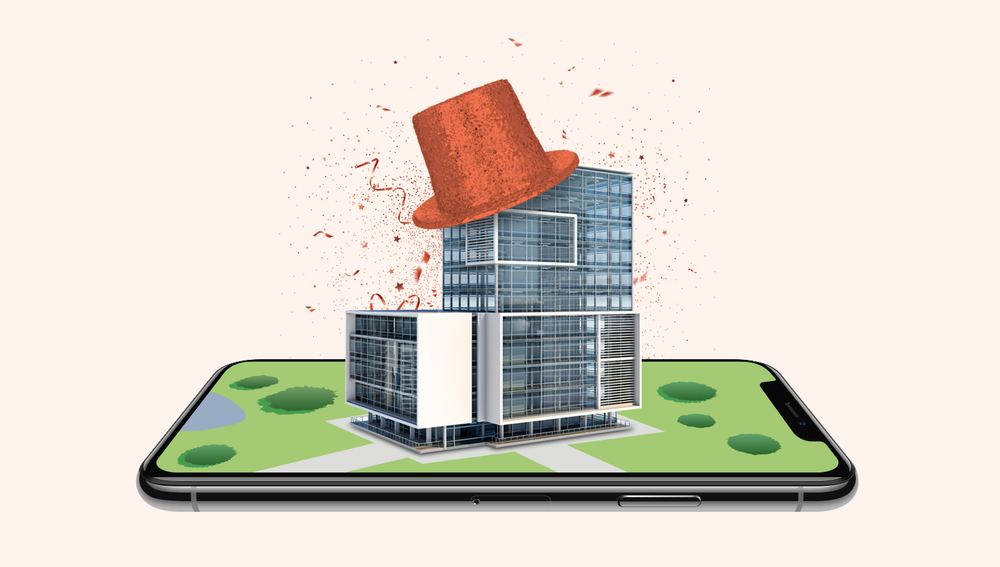
 Giphy
Giphy Francis Scialabba
Francis Scialabba


























































































































































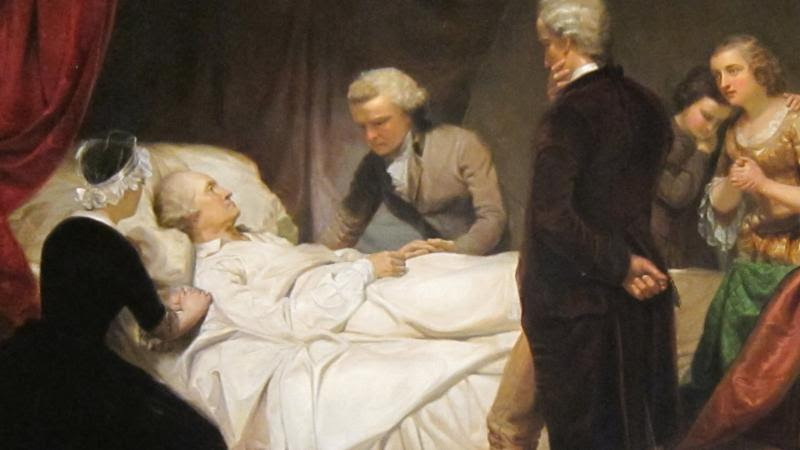

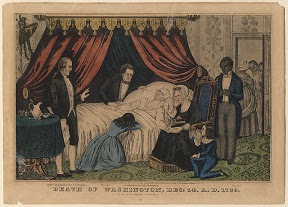









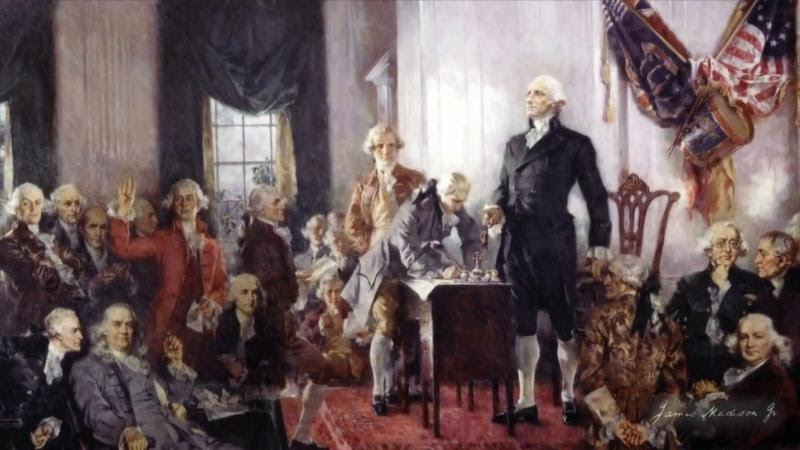









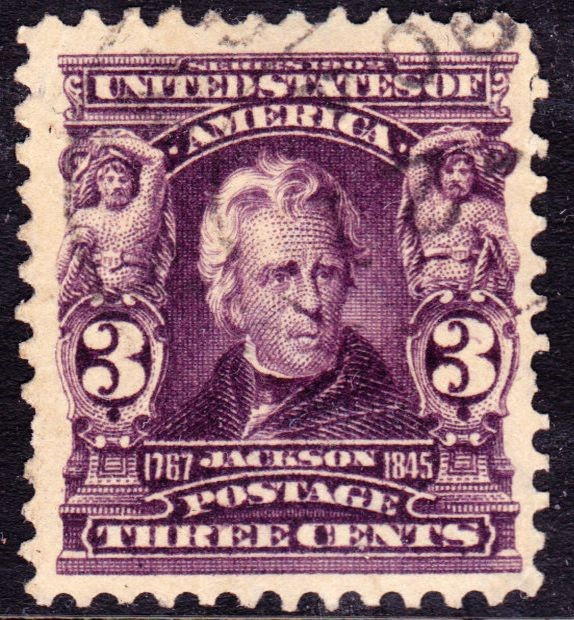
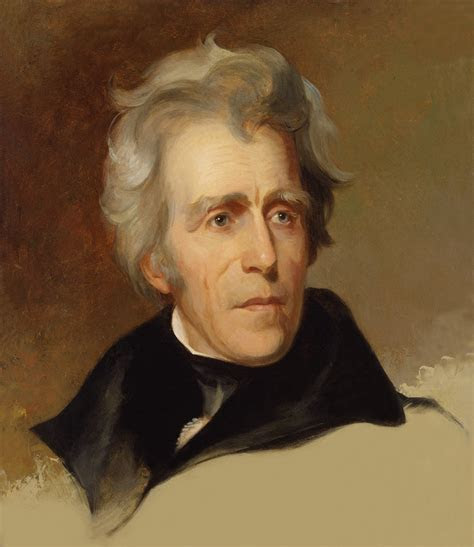





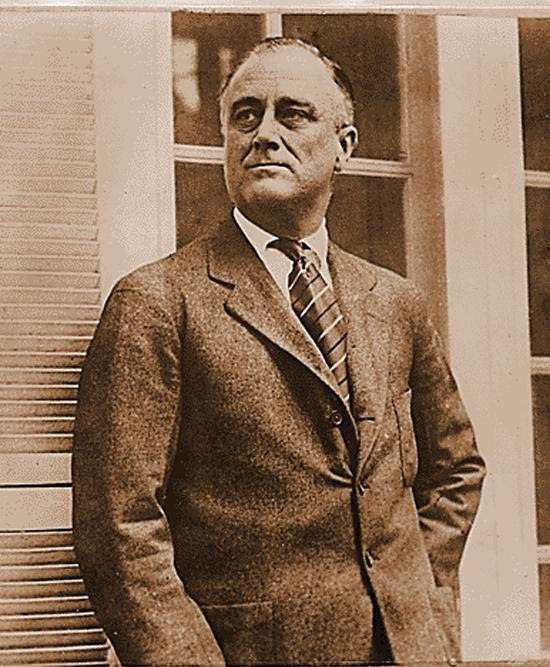

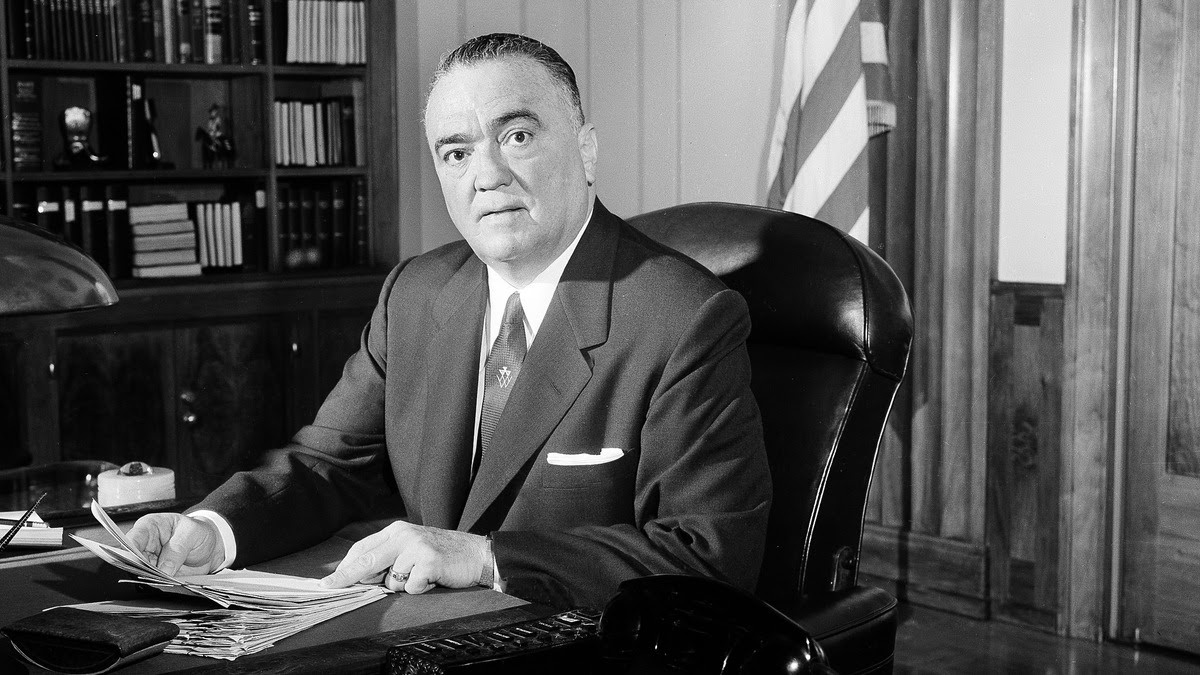
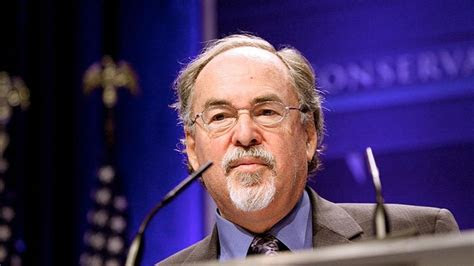


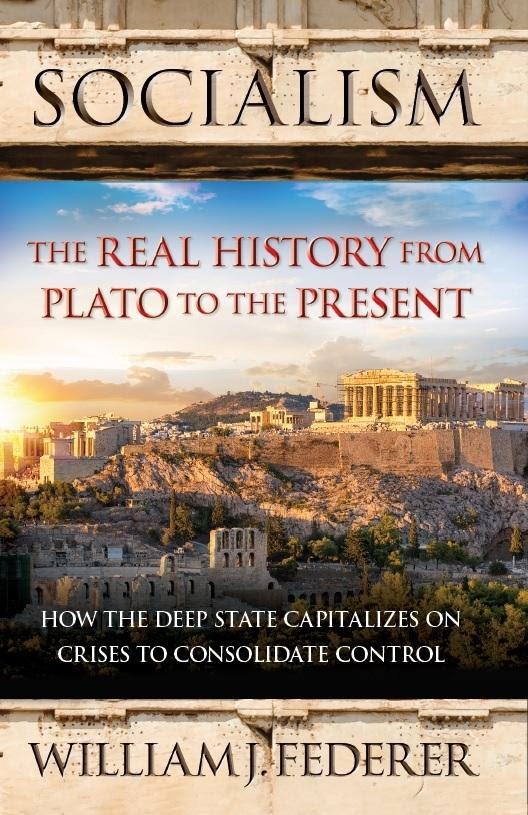























































































 (@disclosetv)
(@disclosetv) 






















































































































































